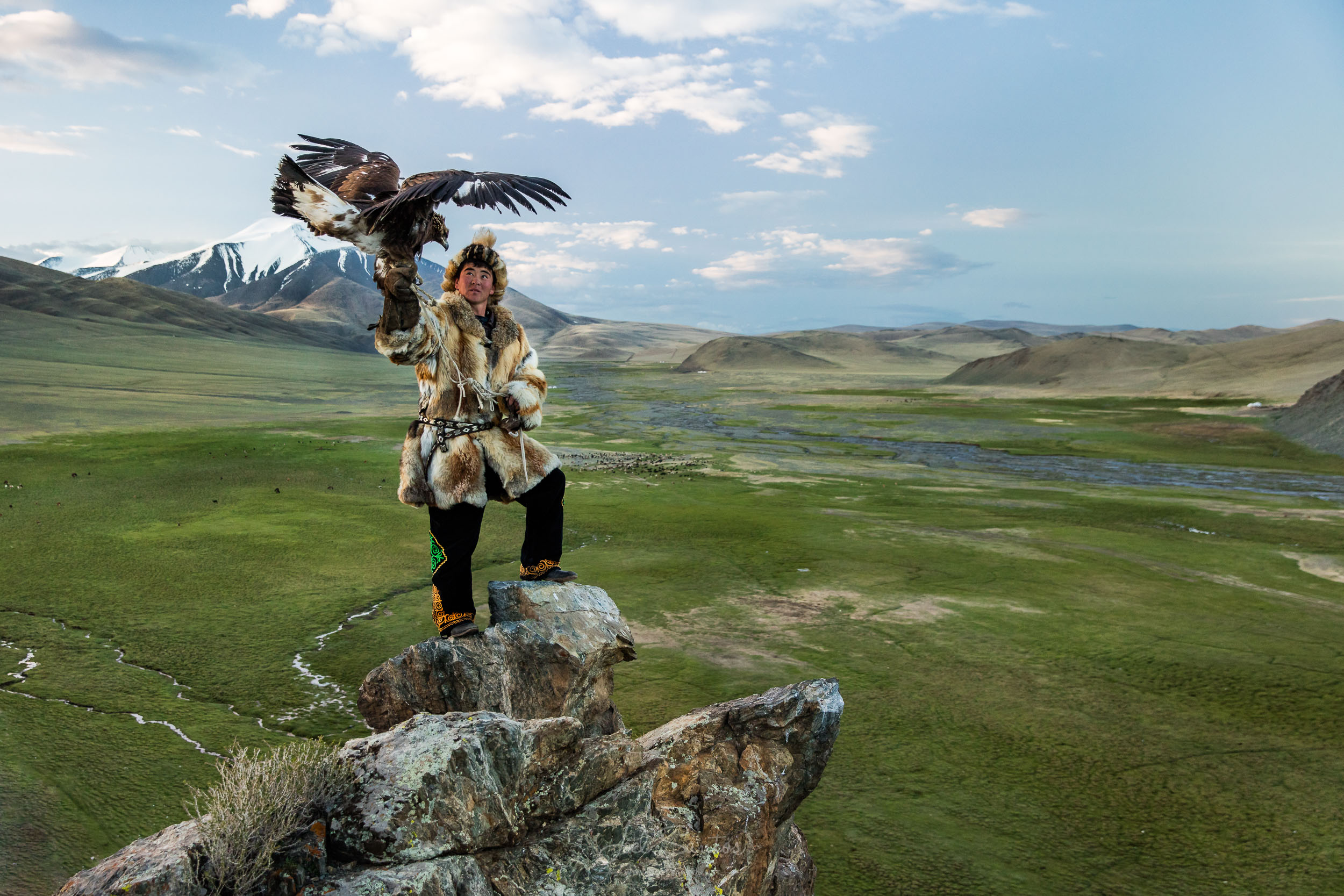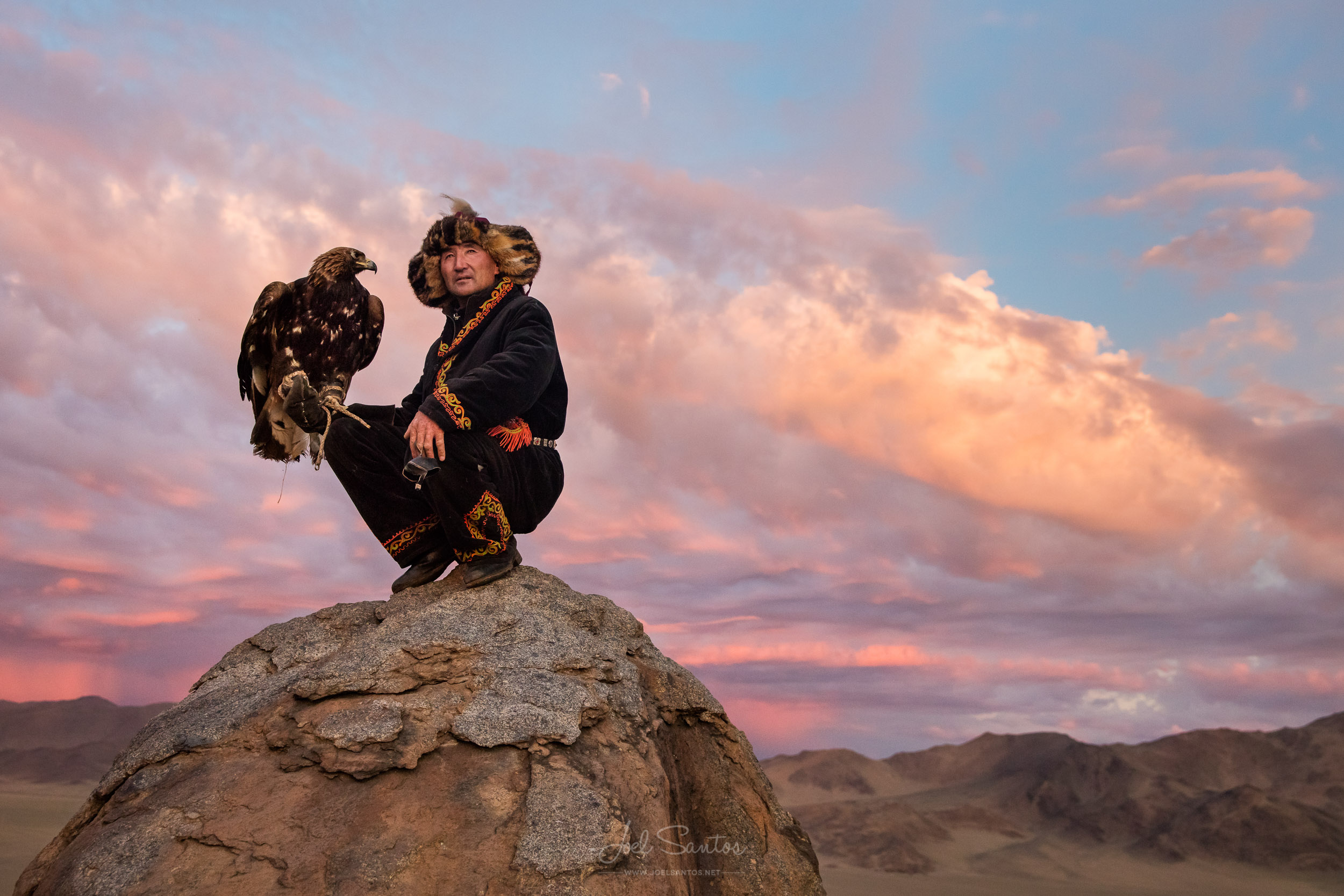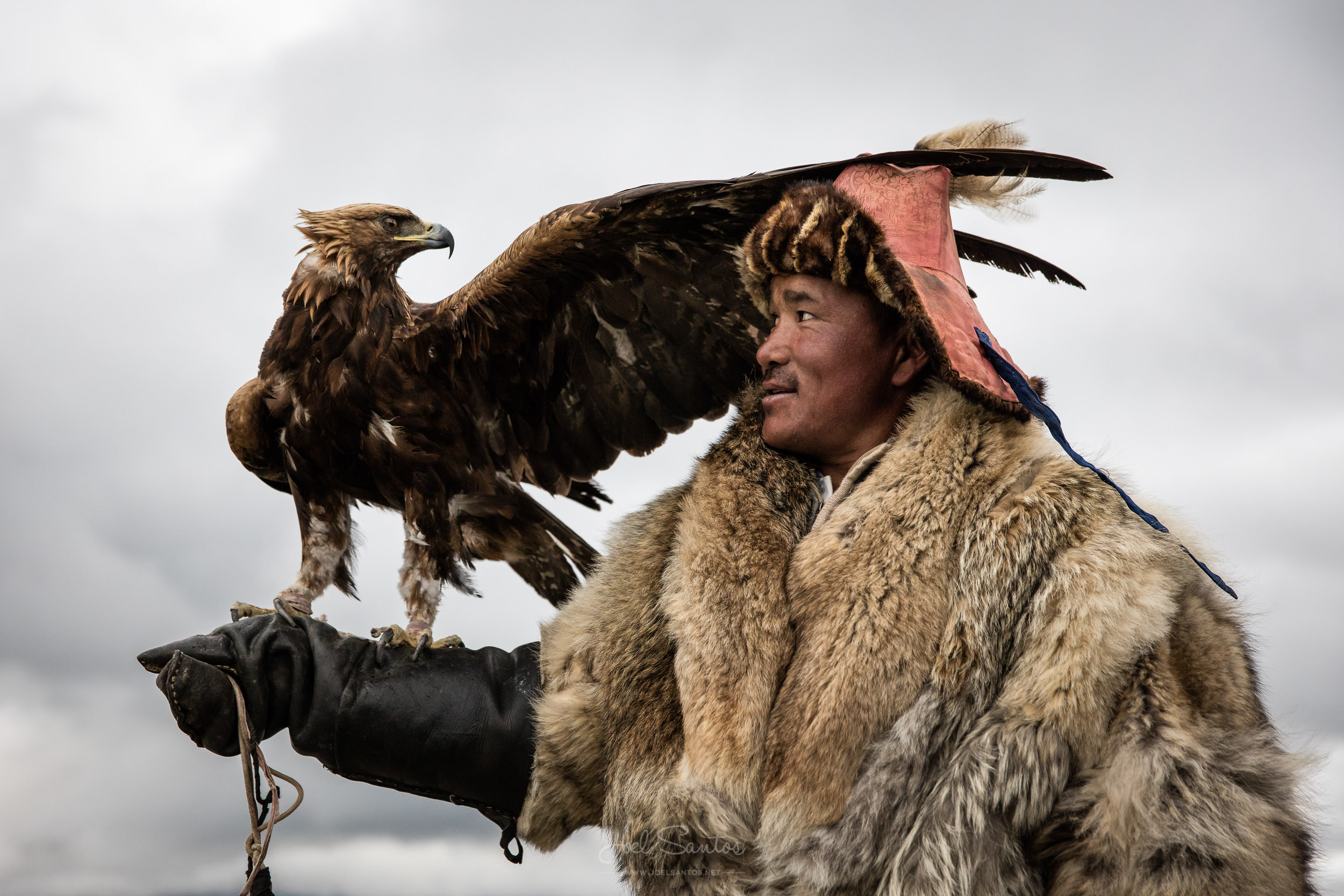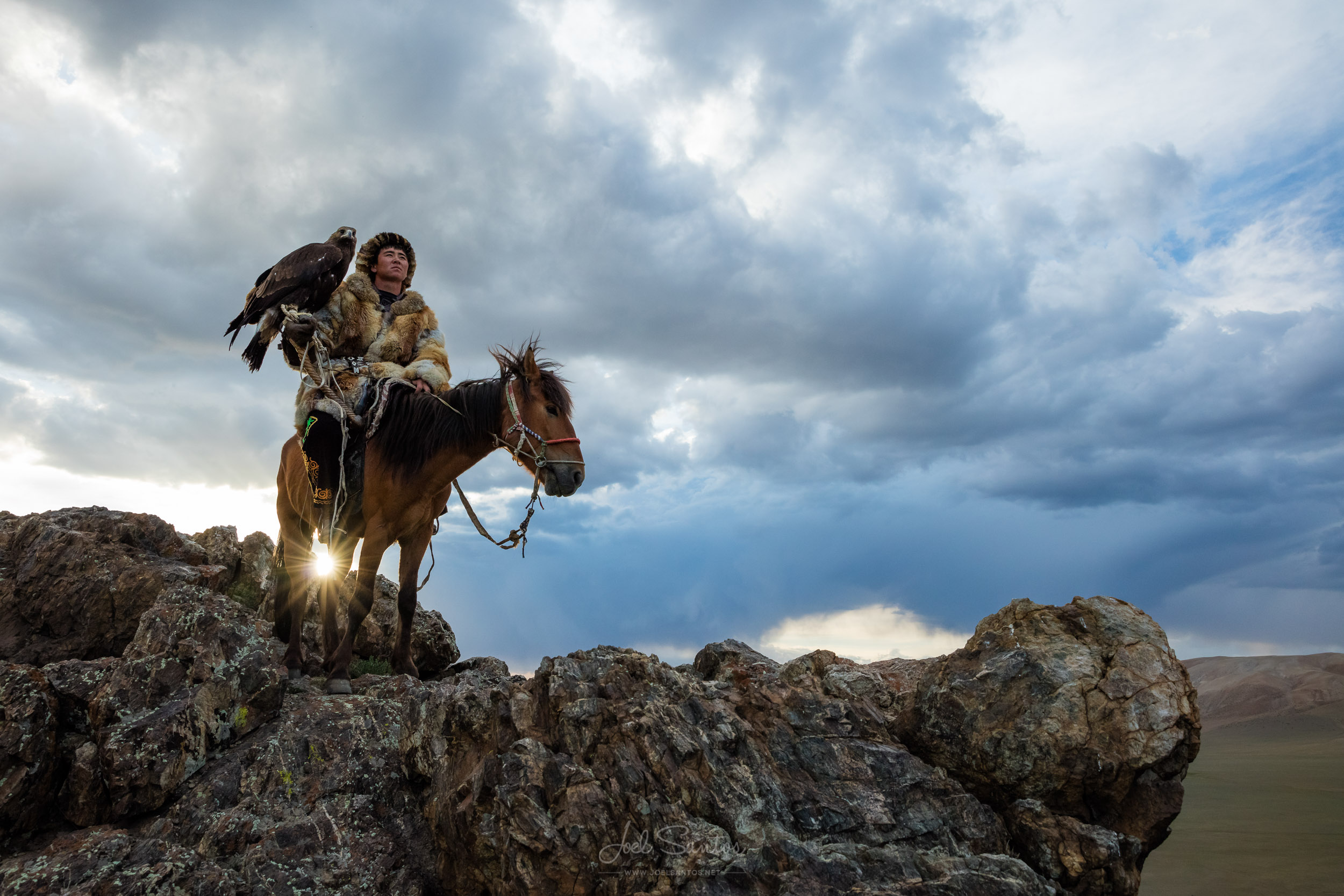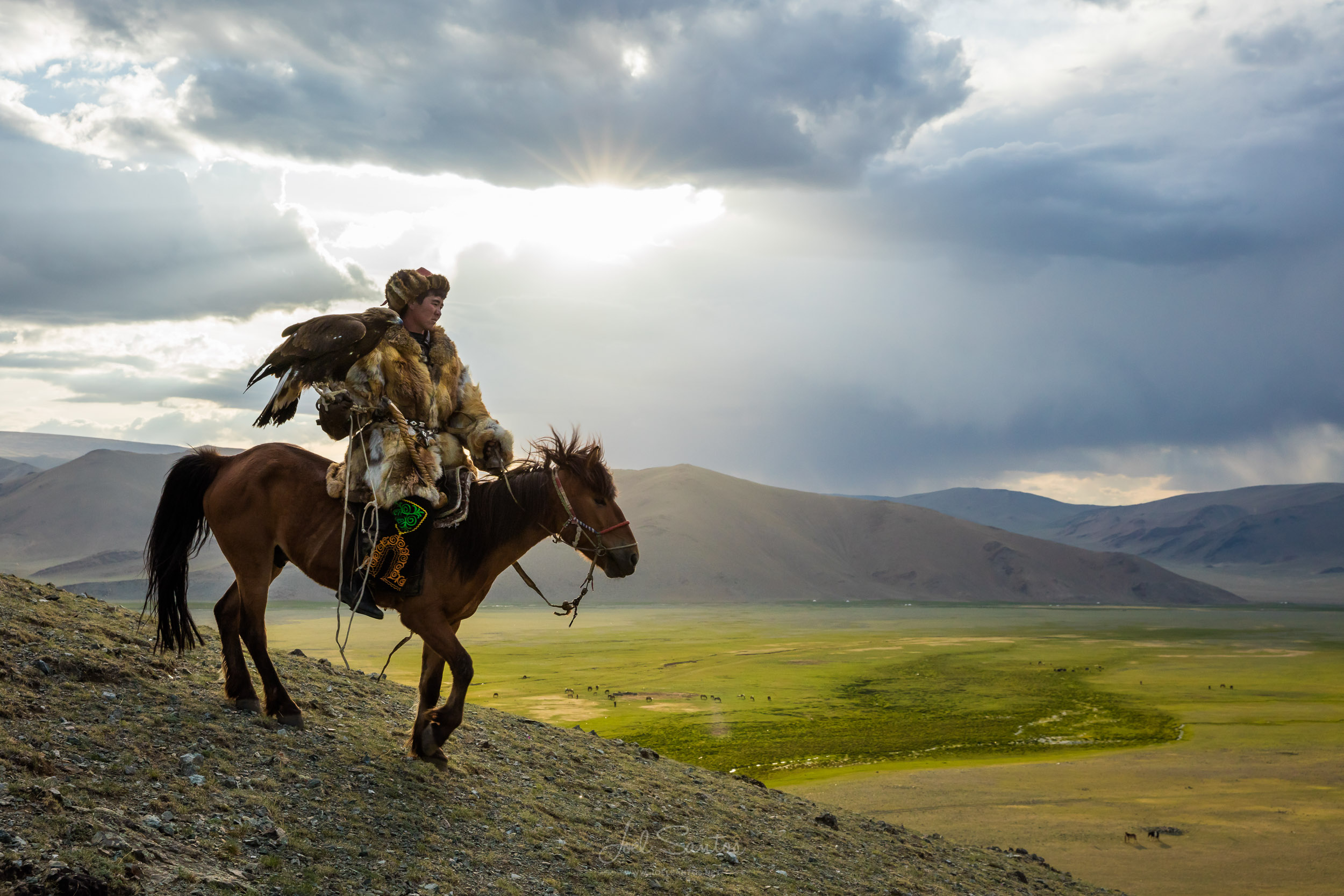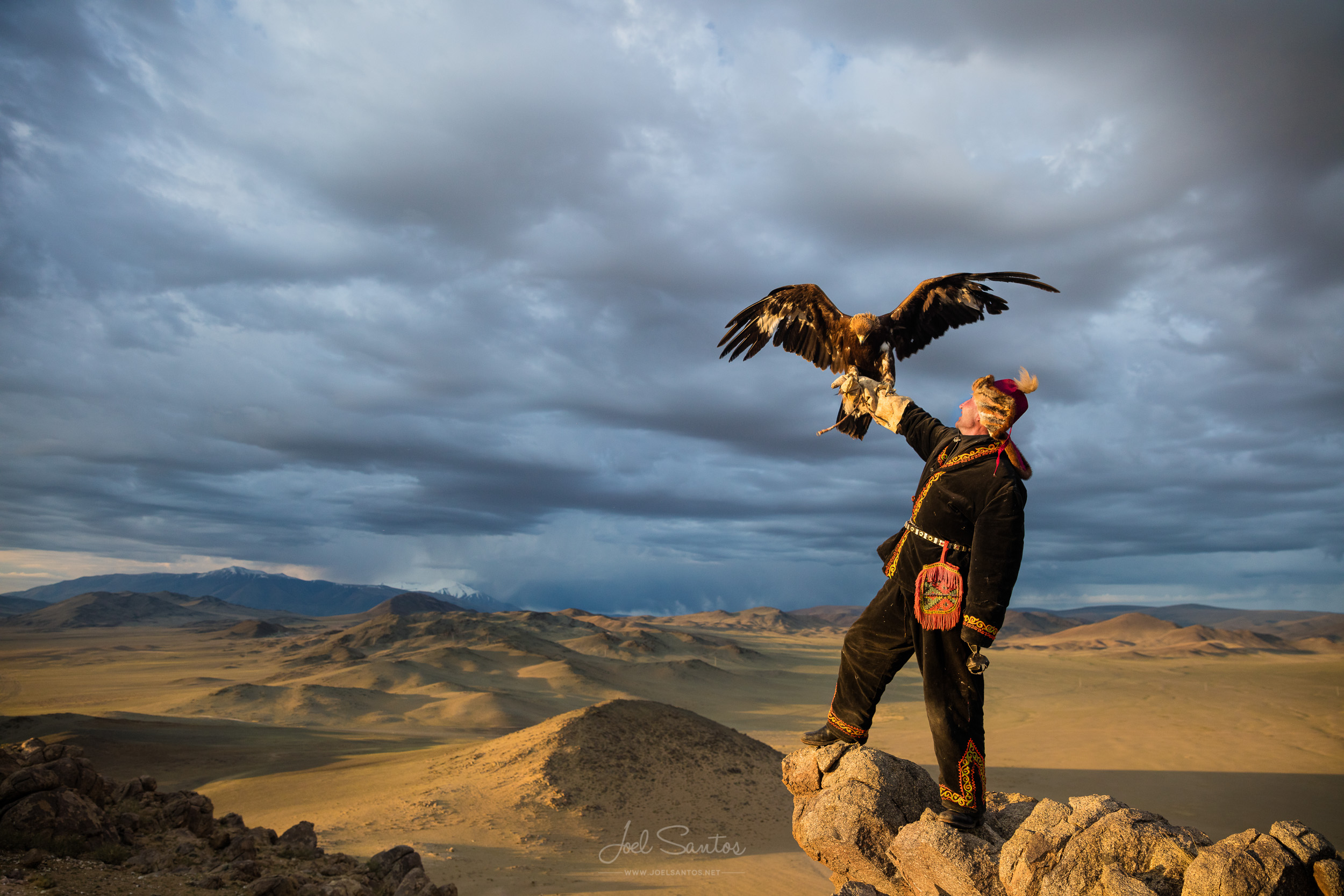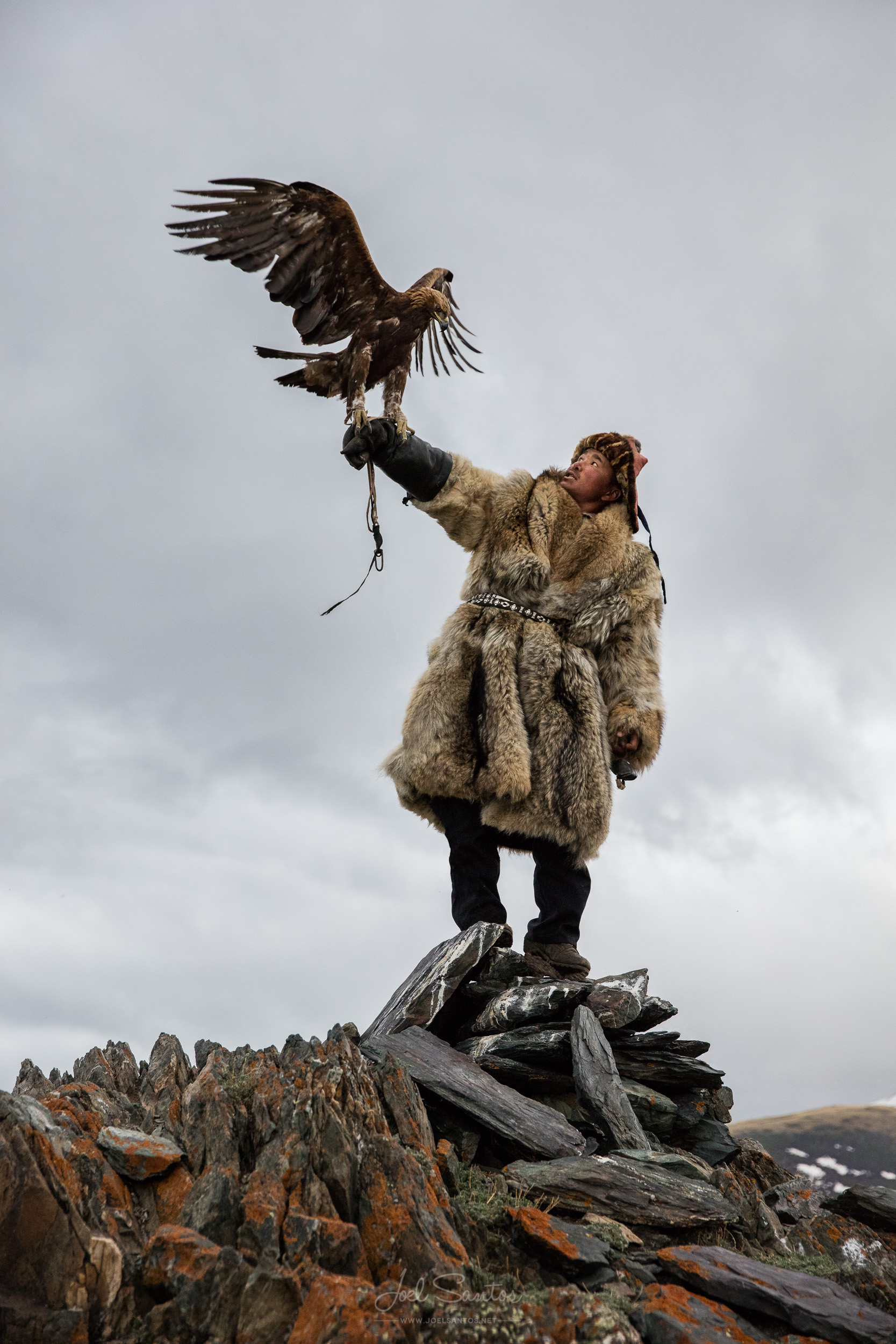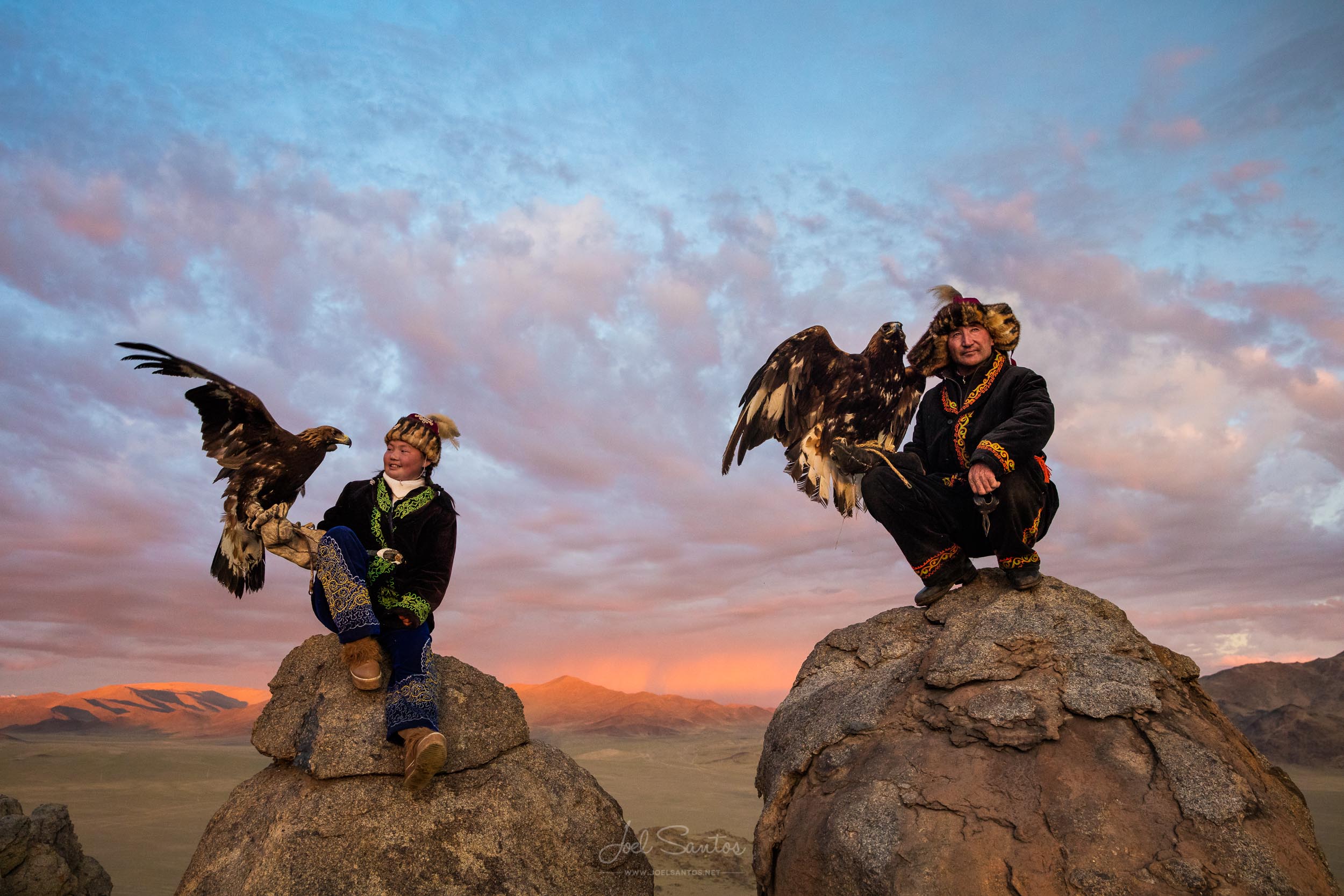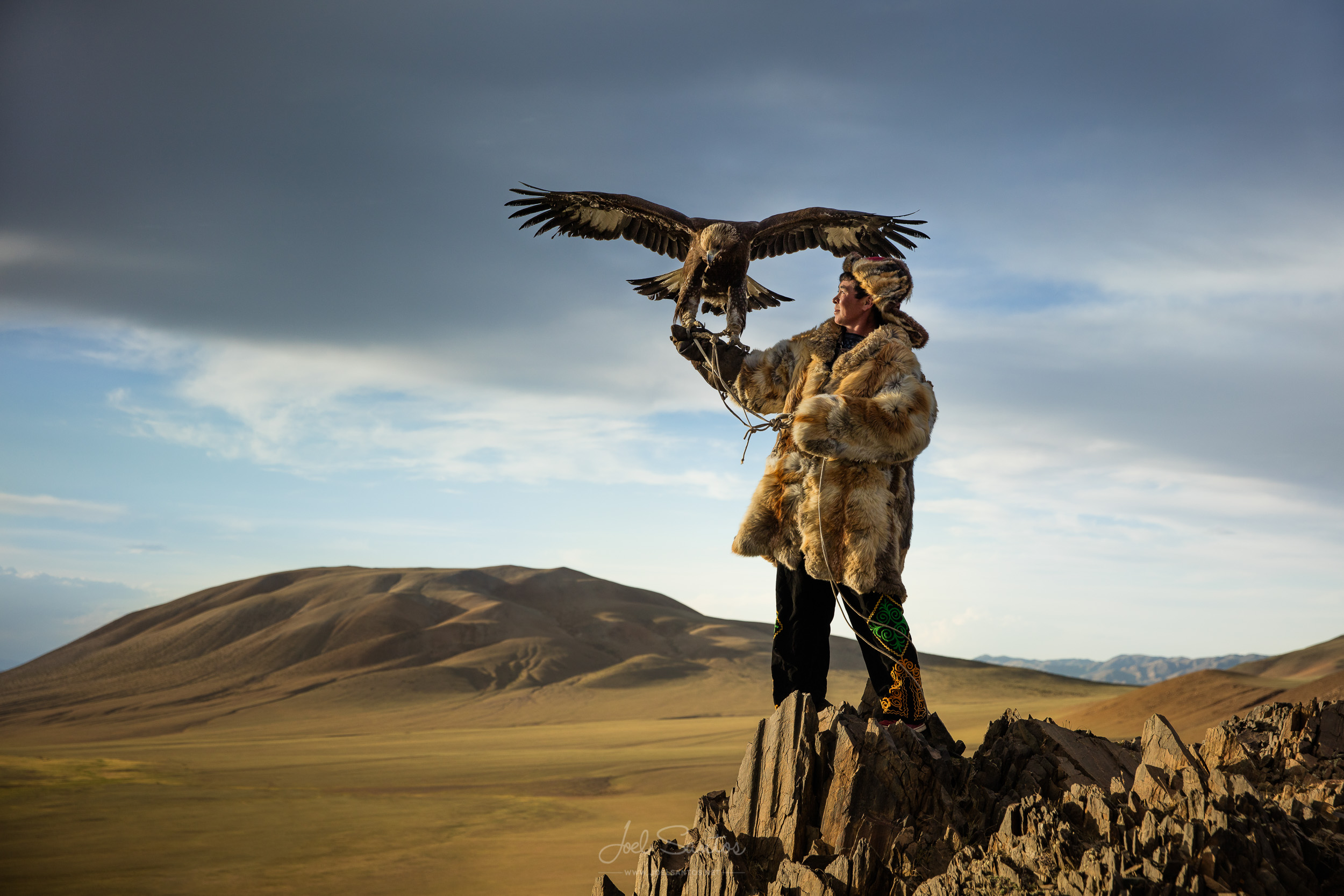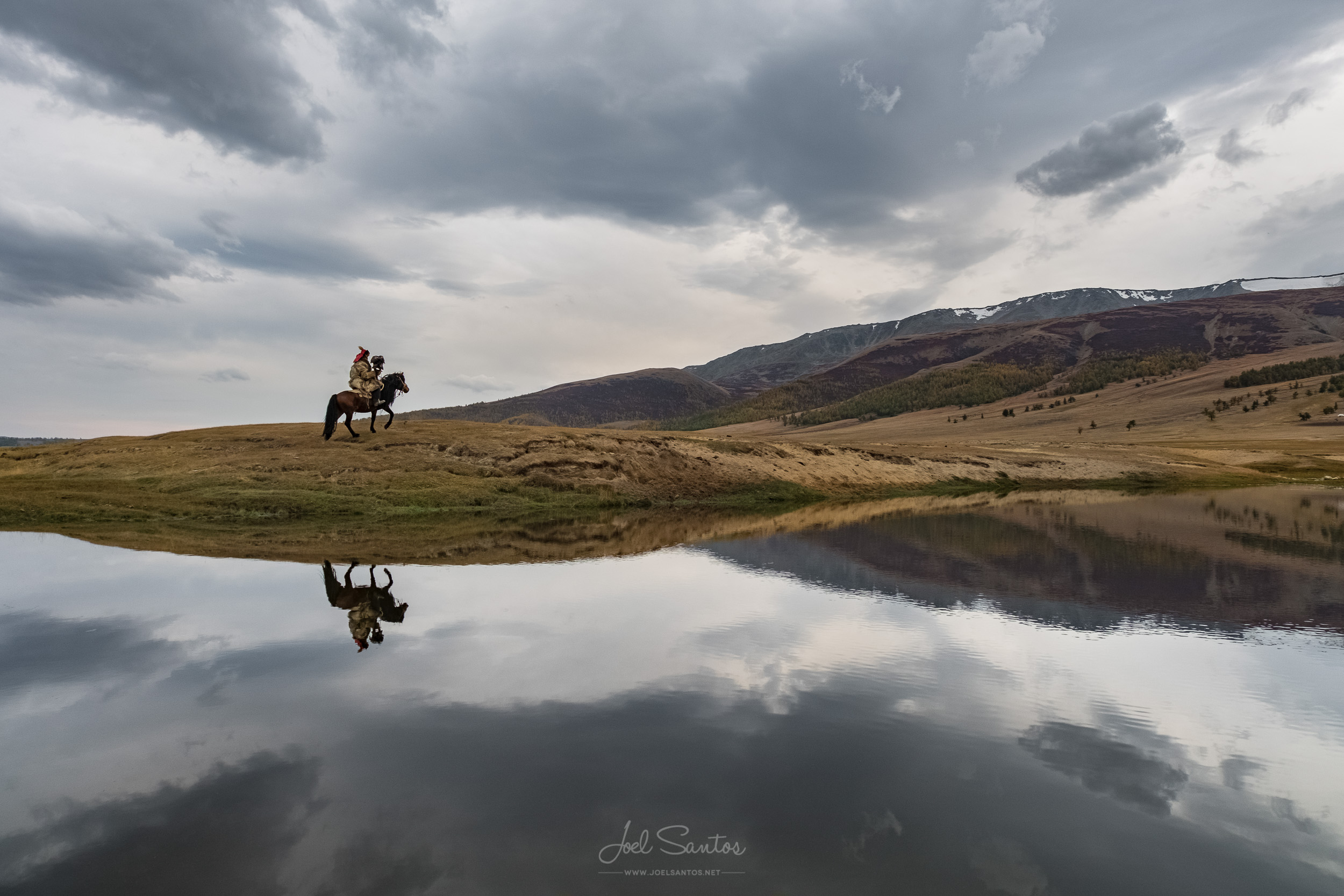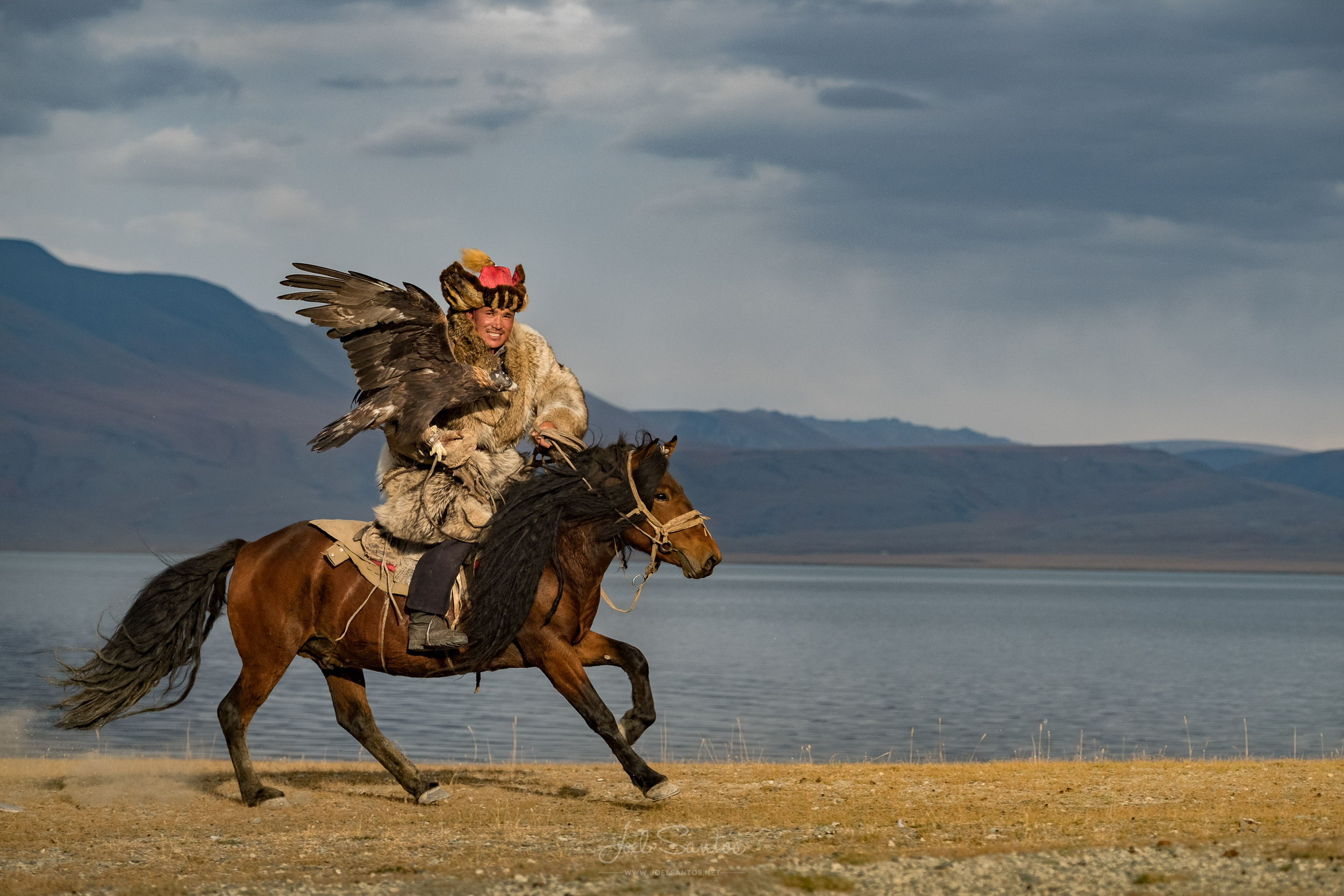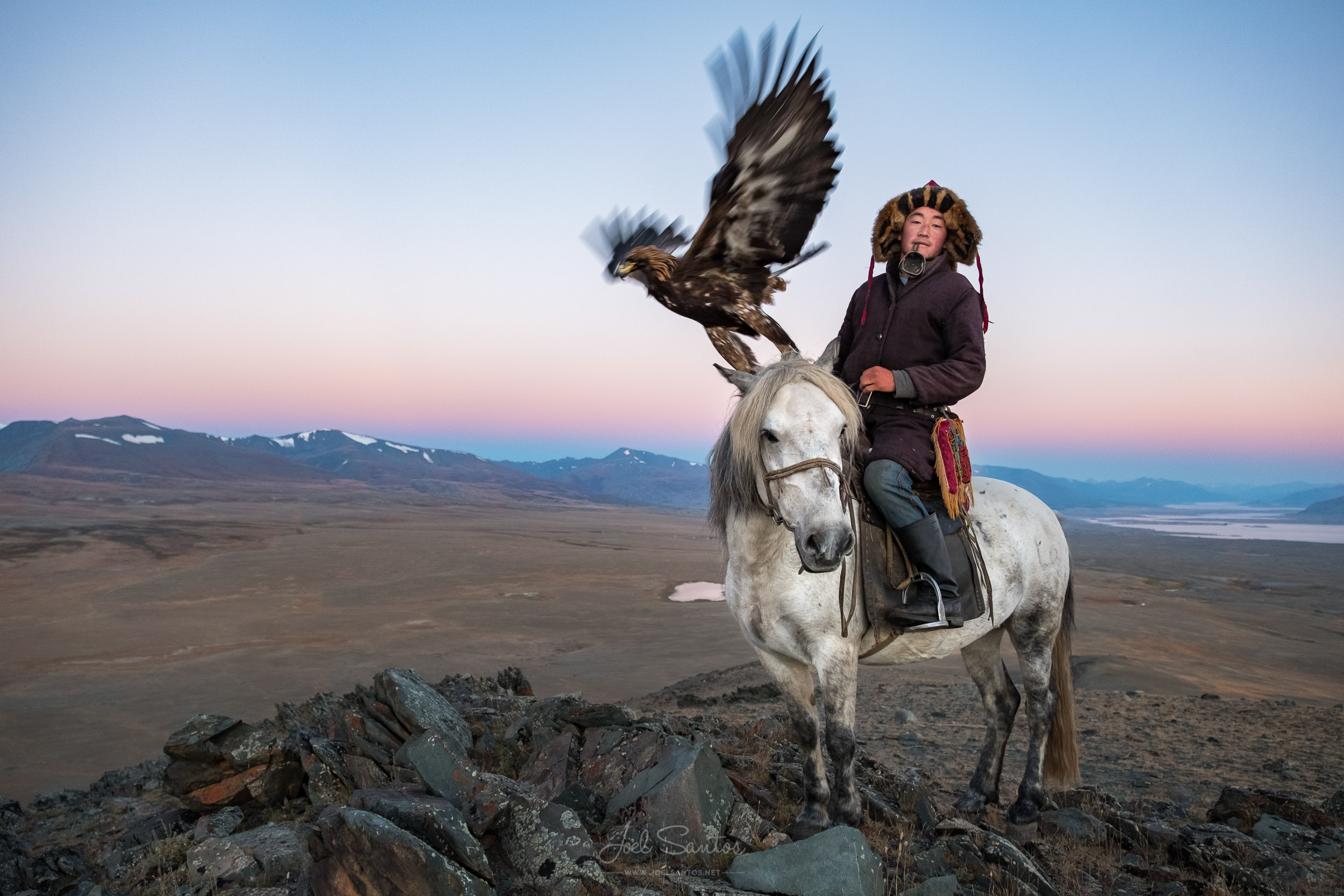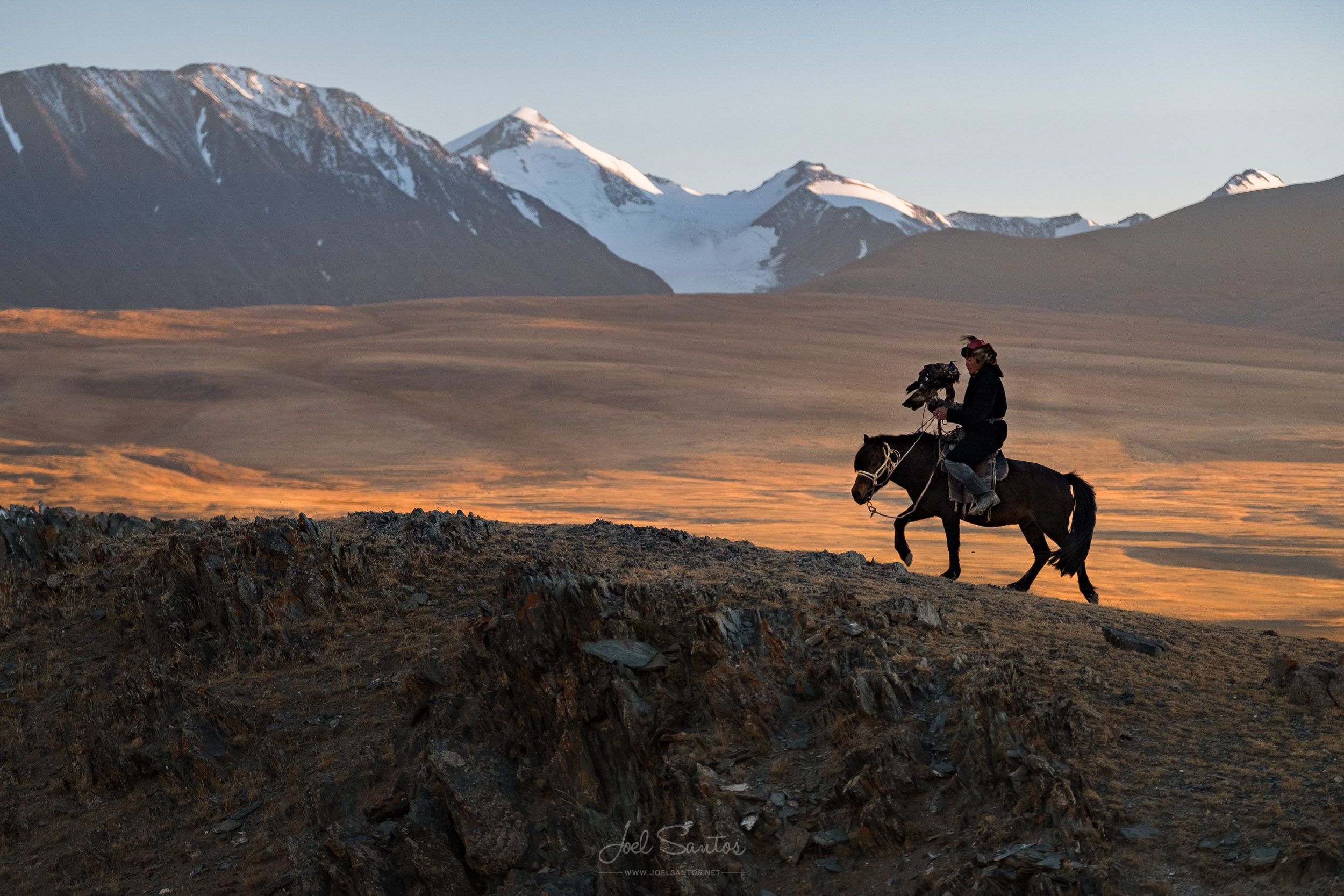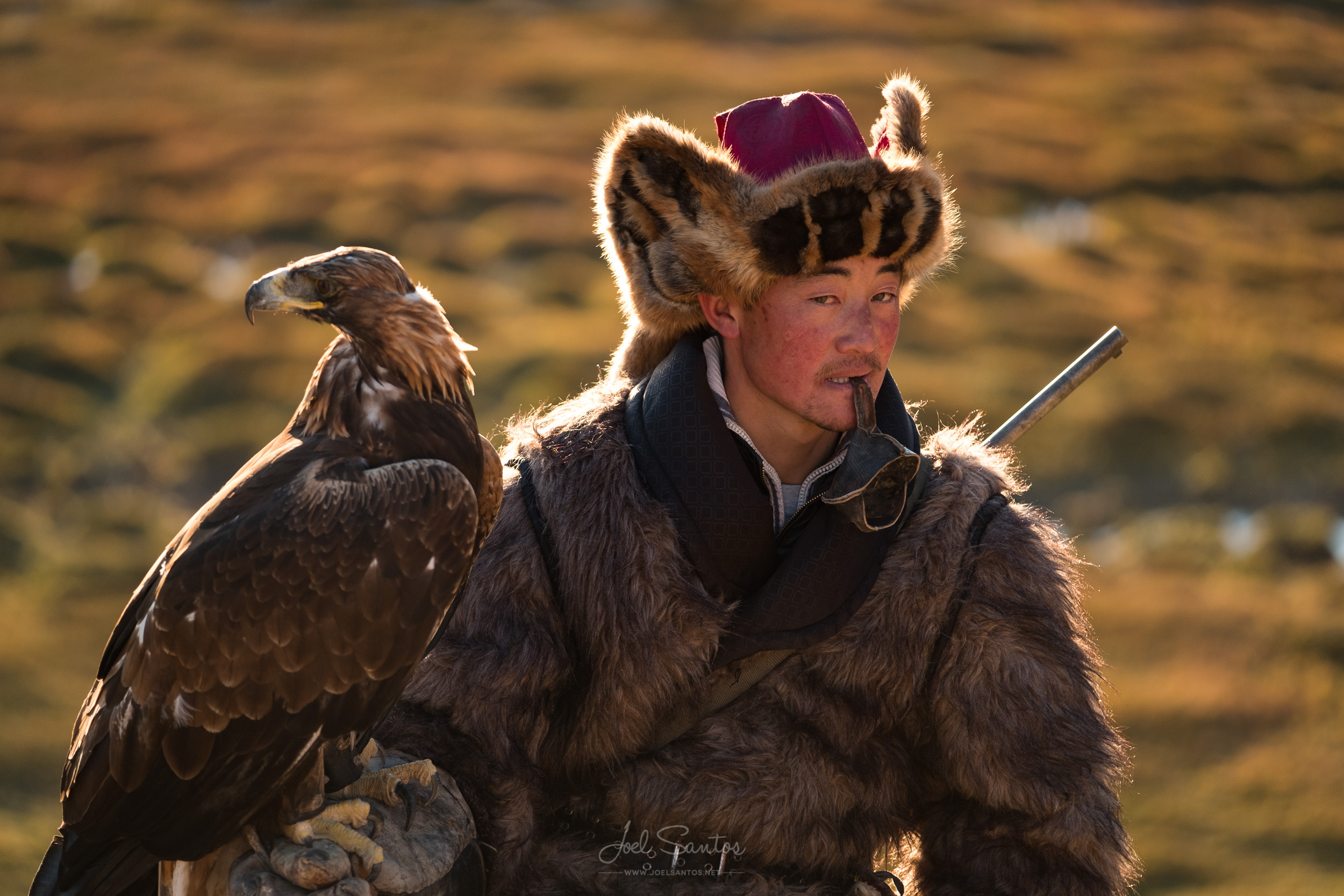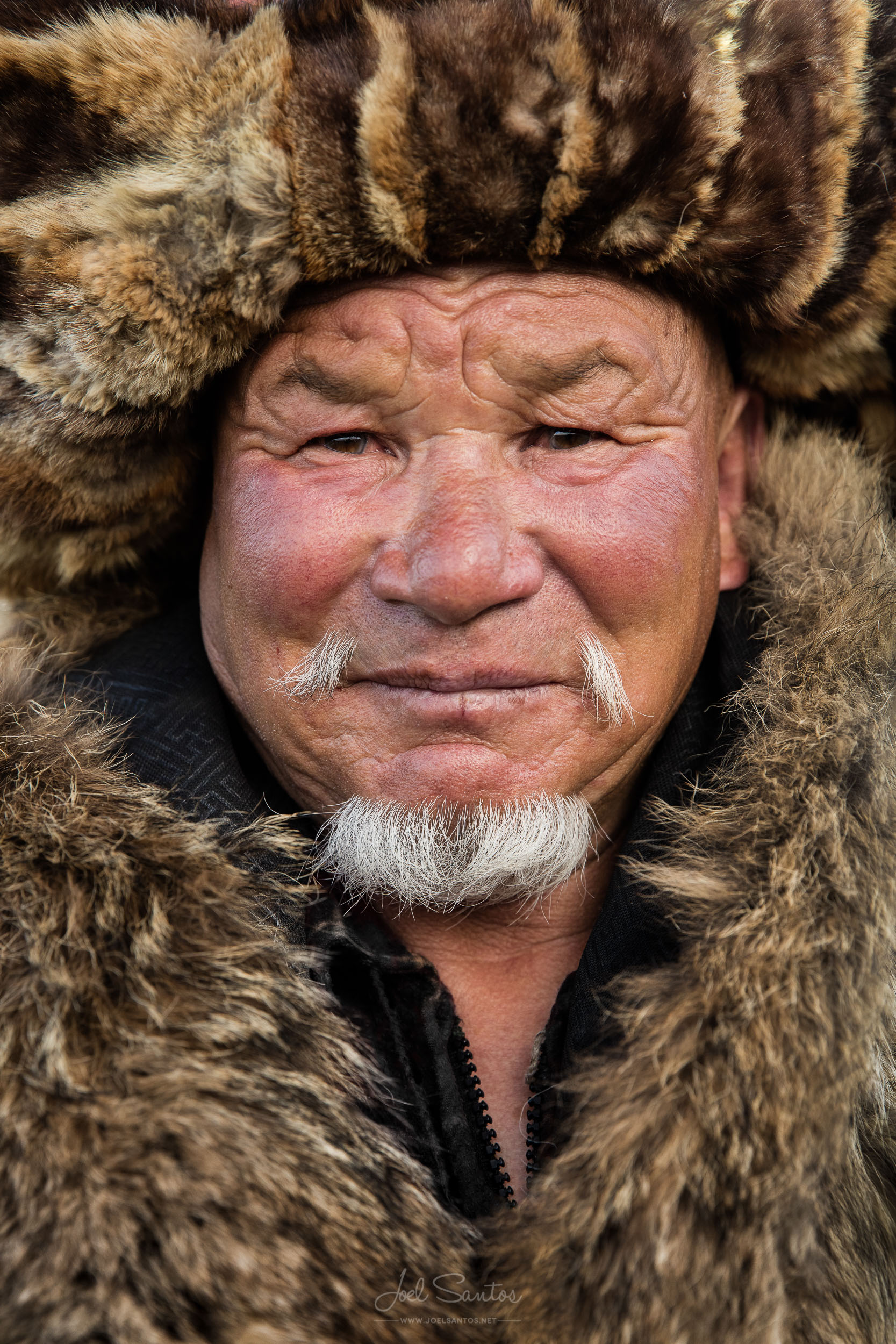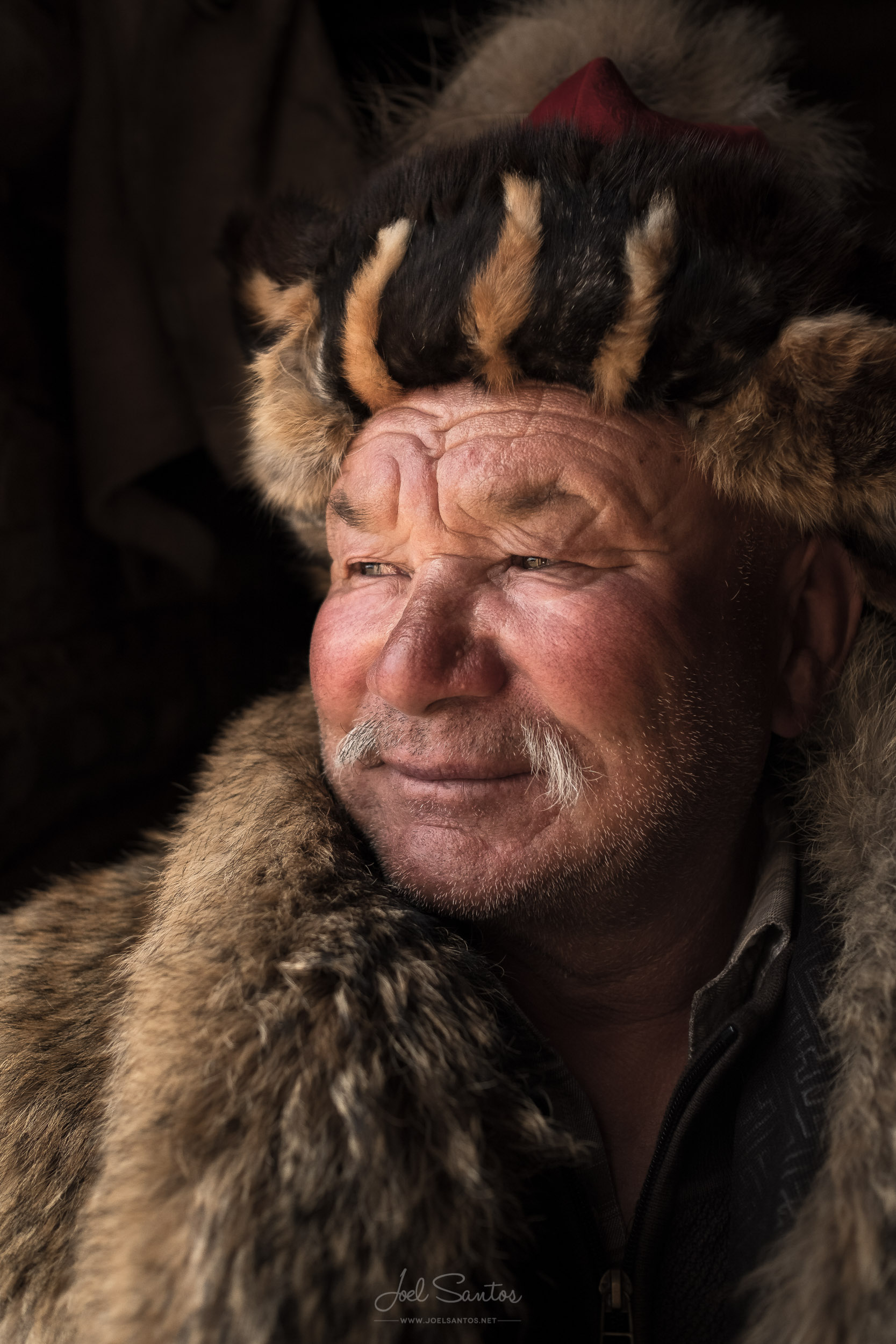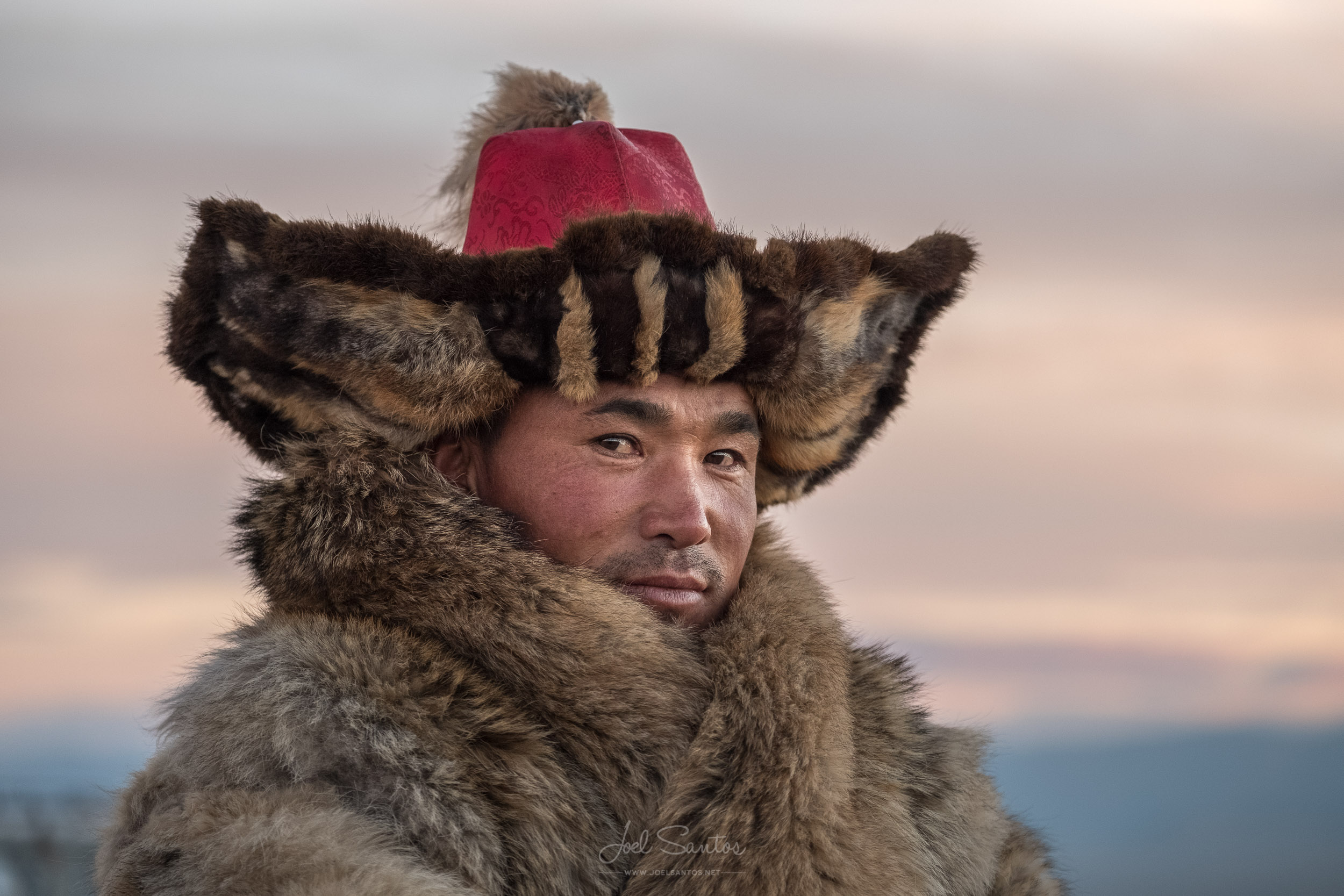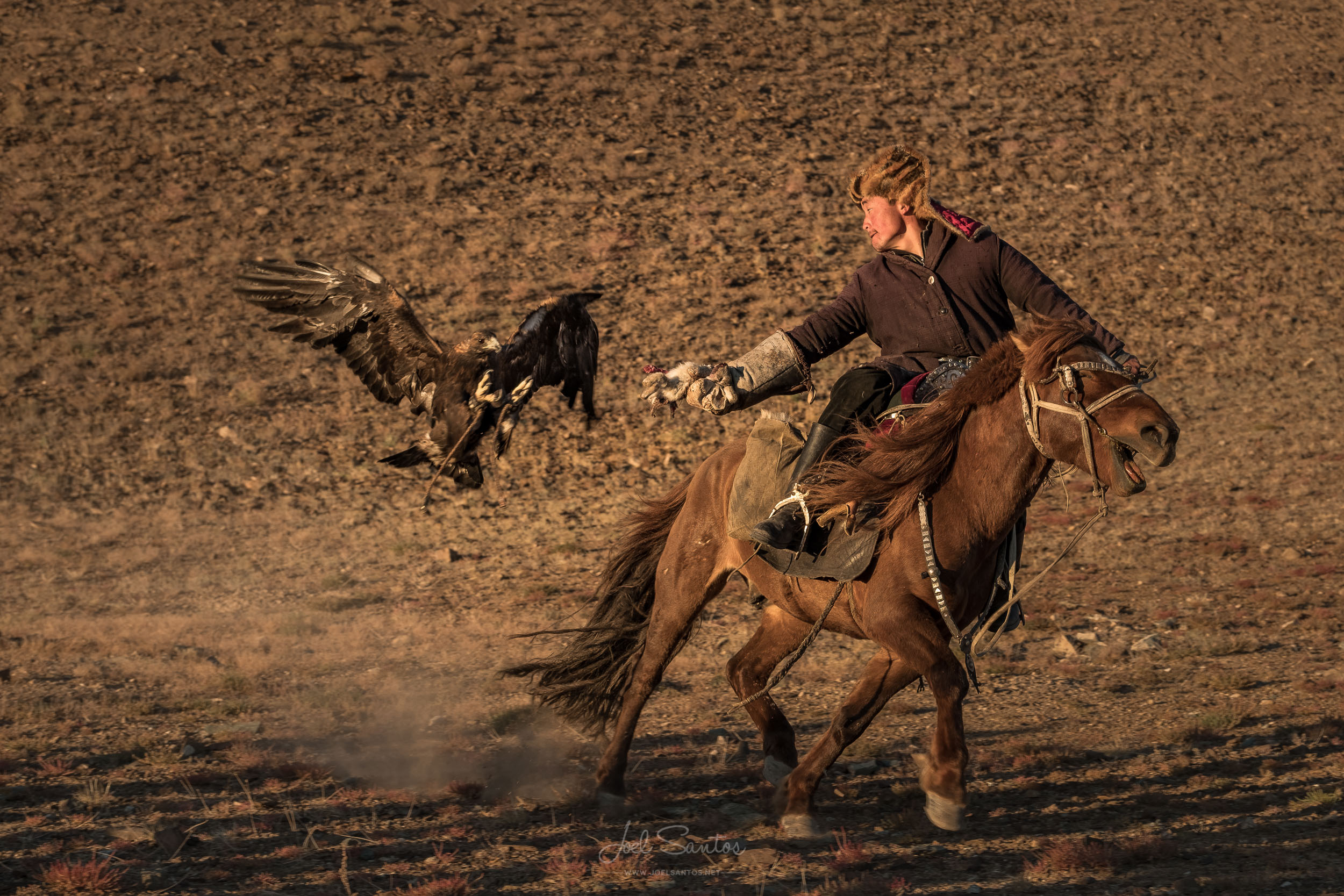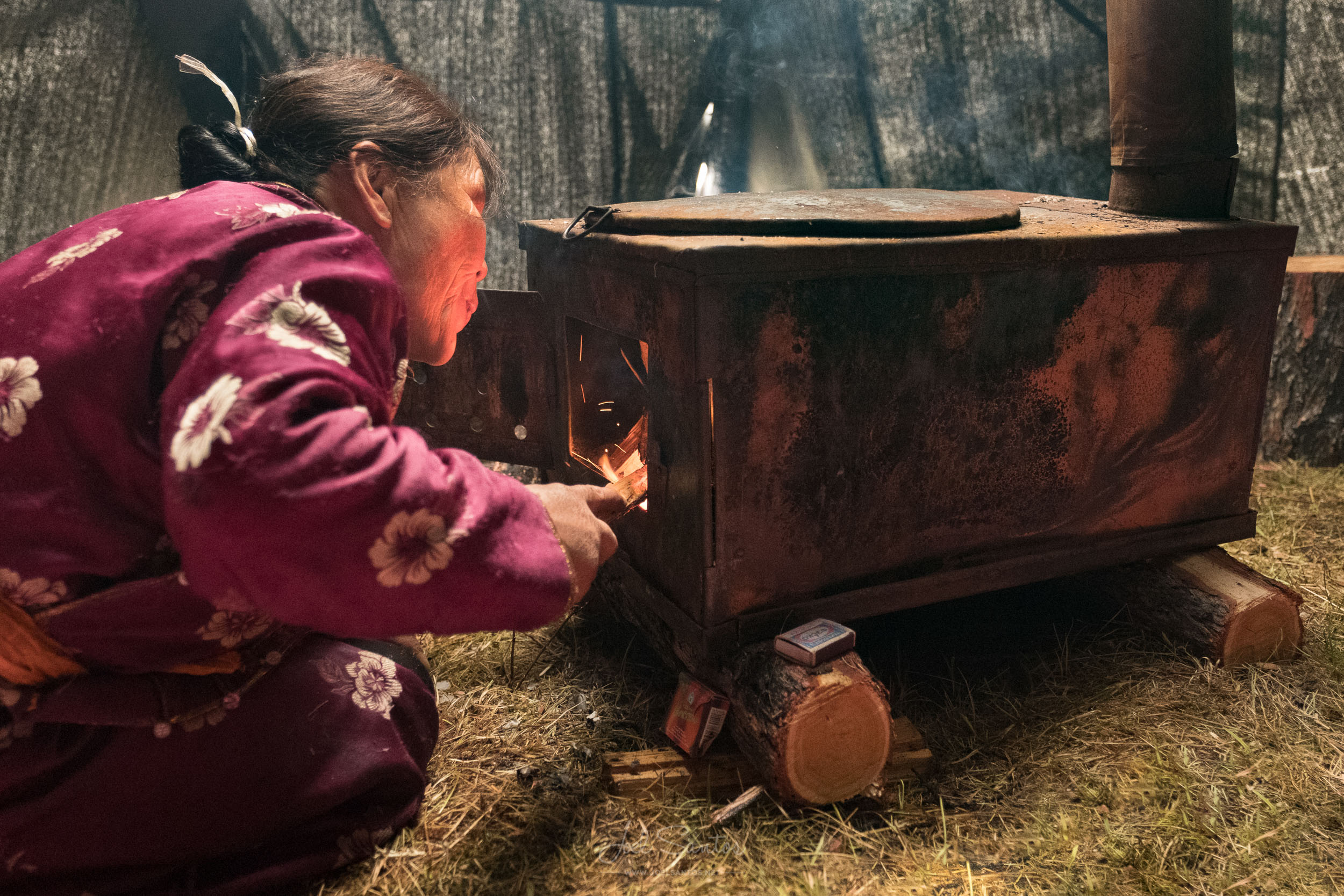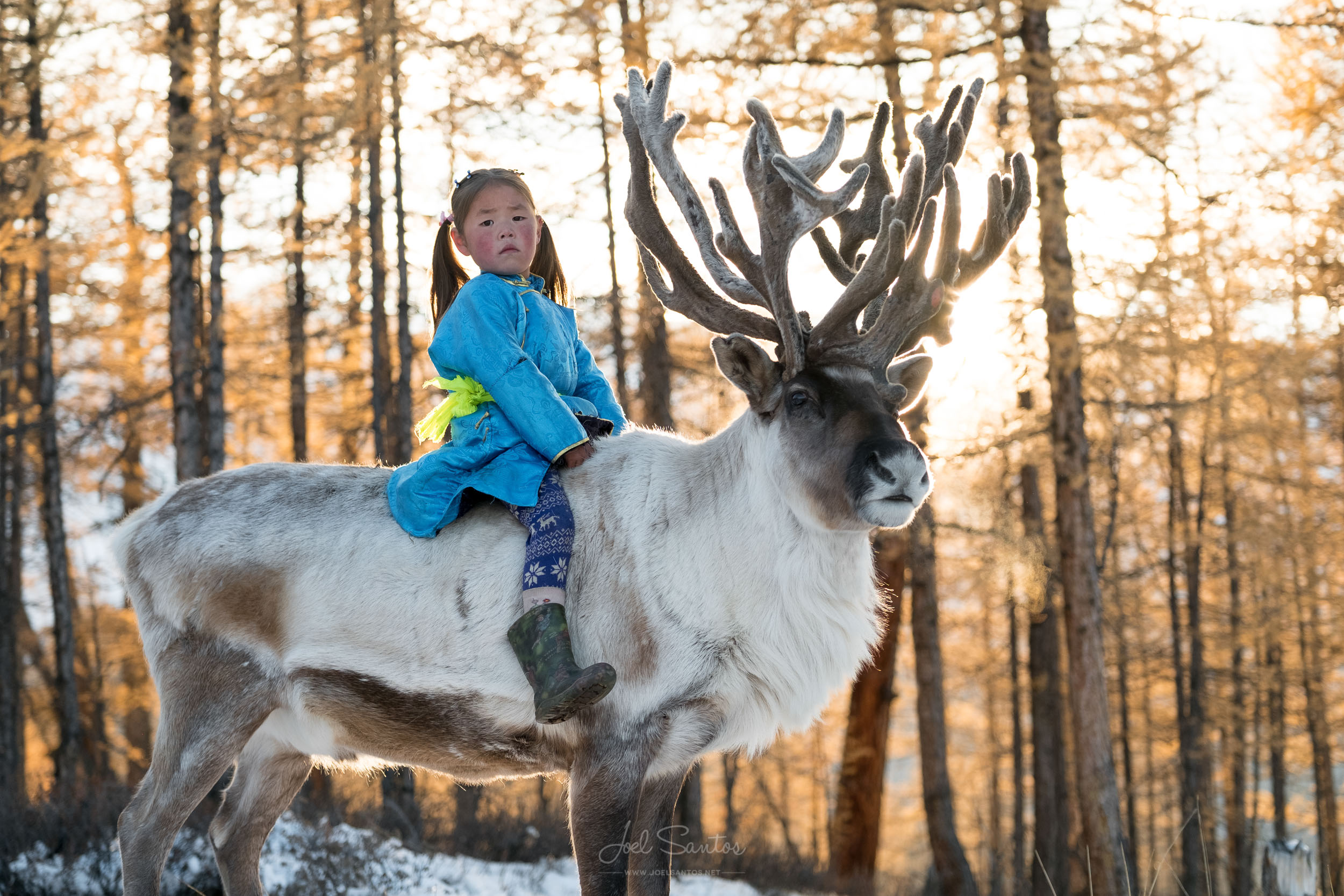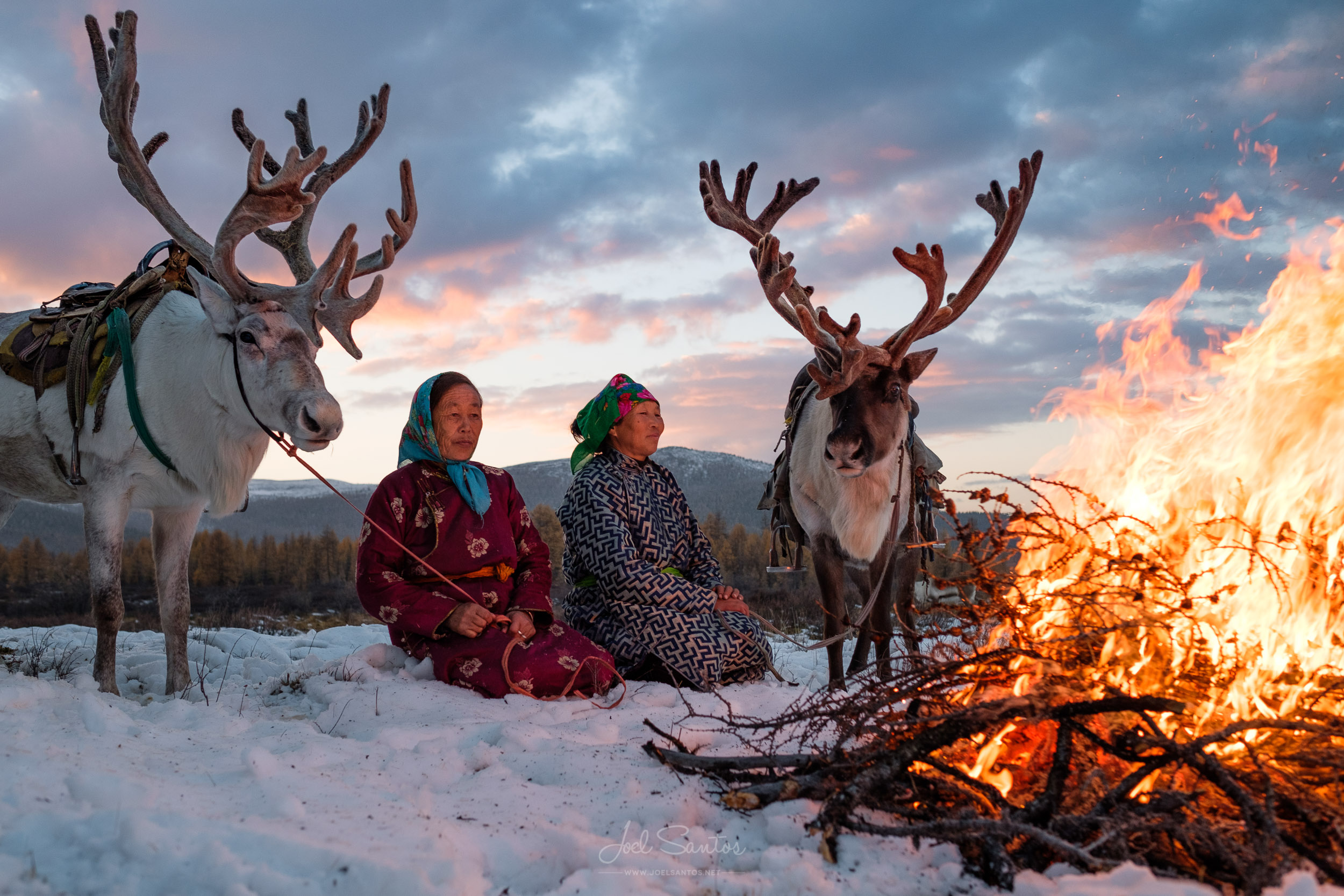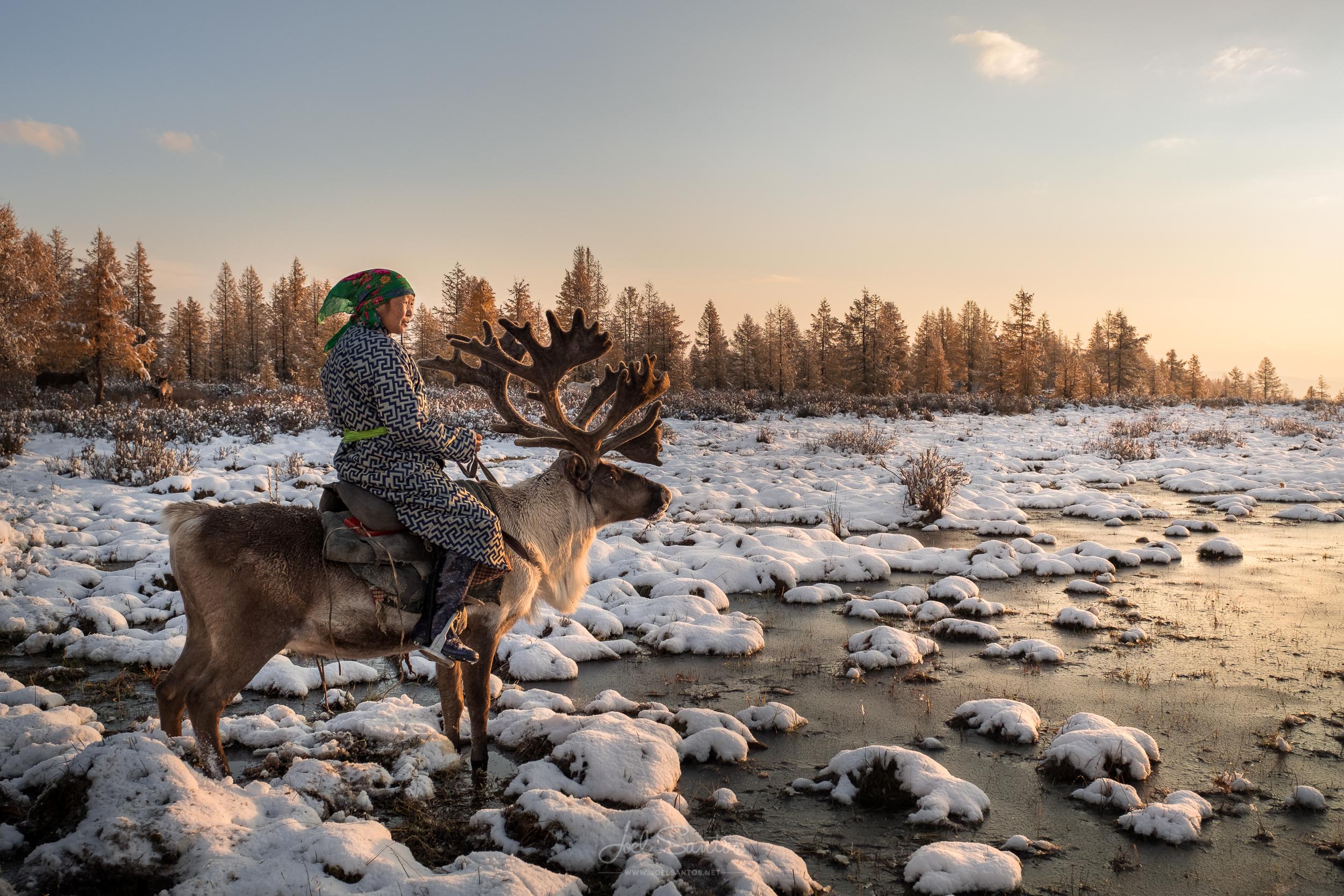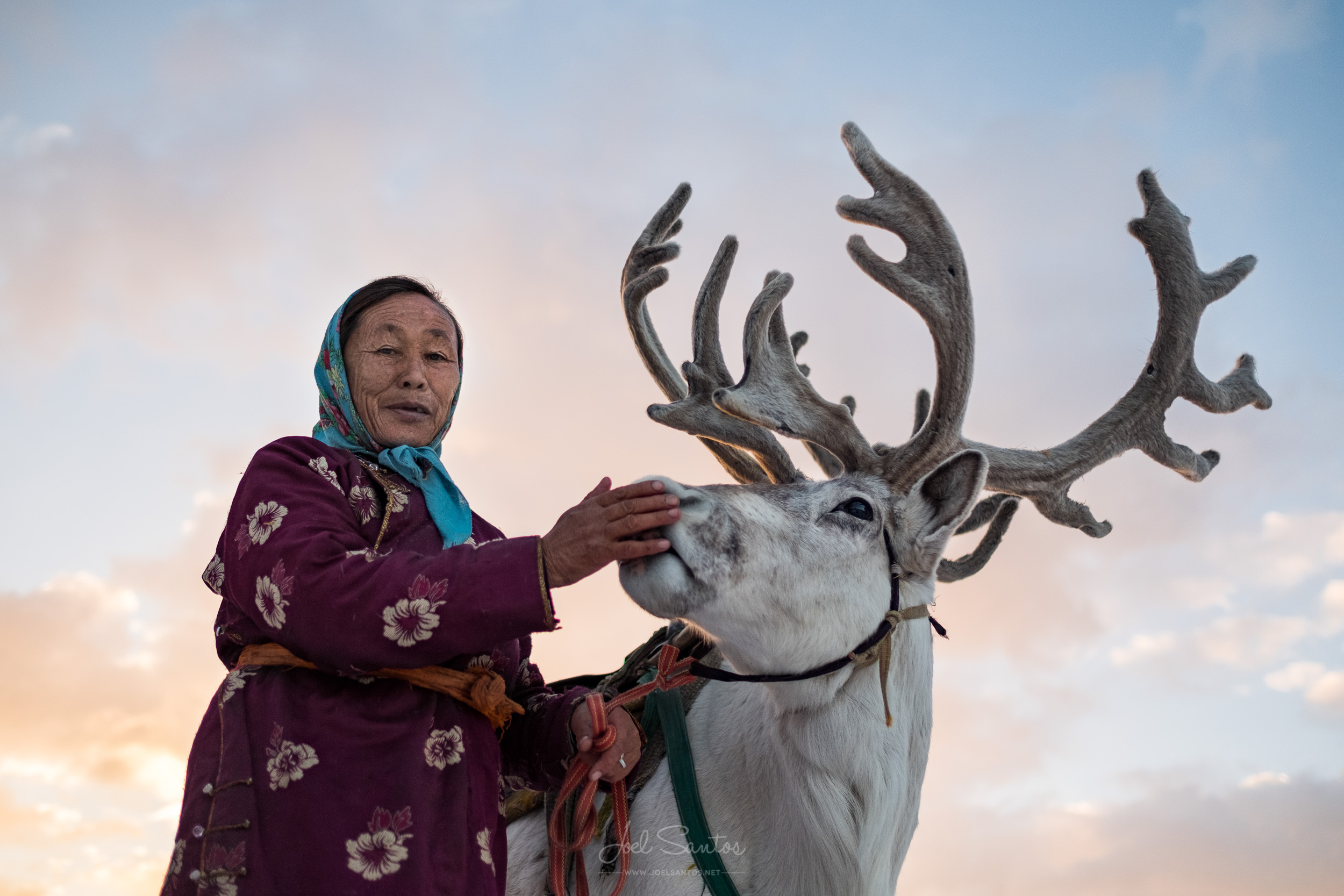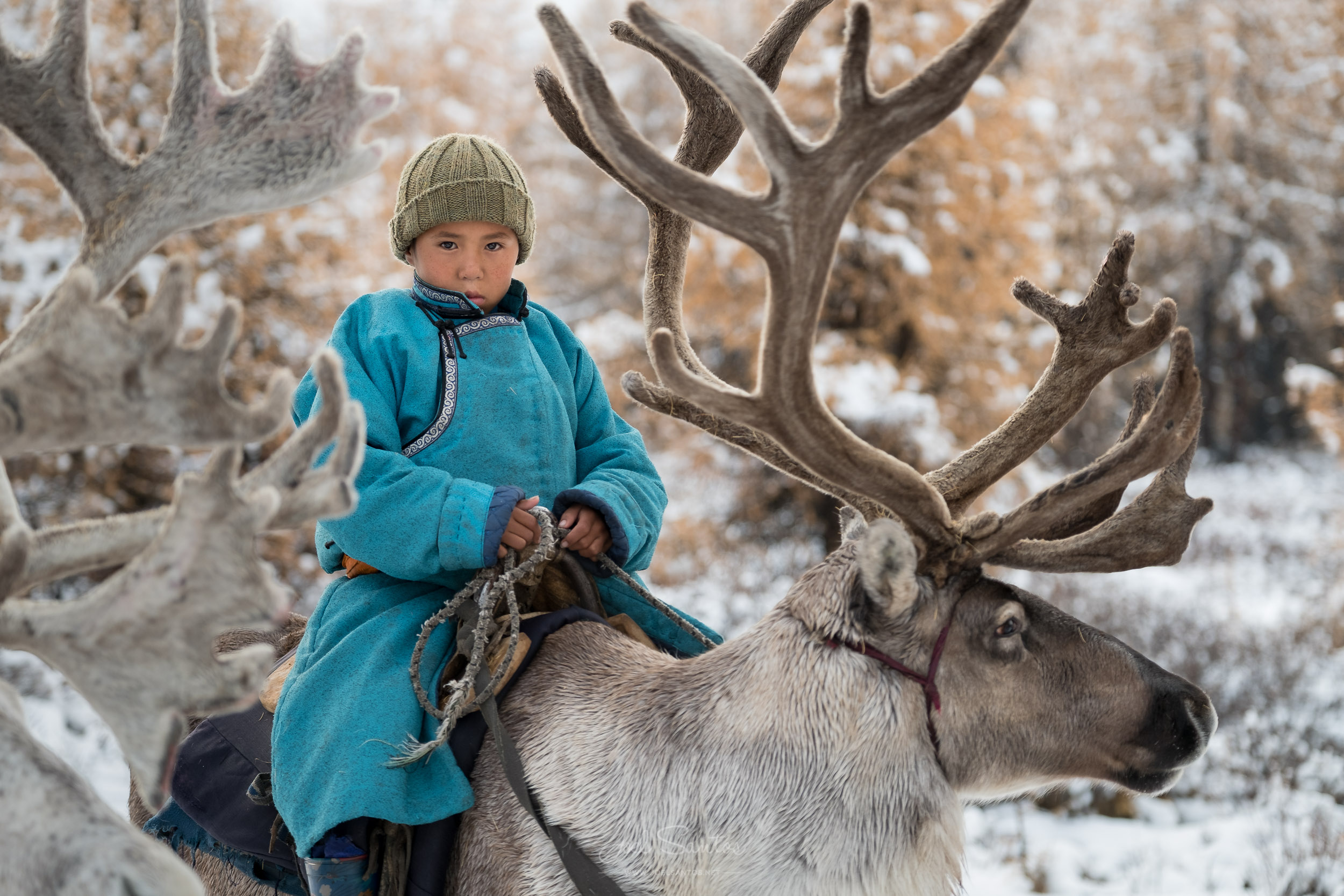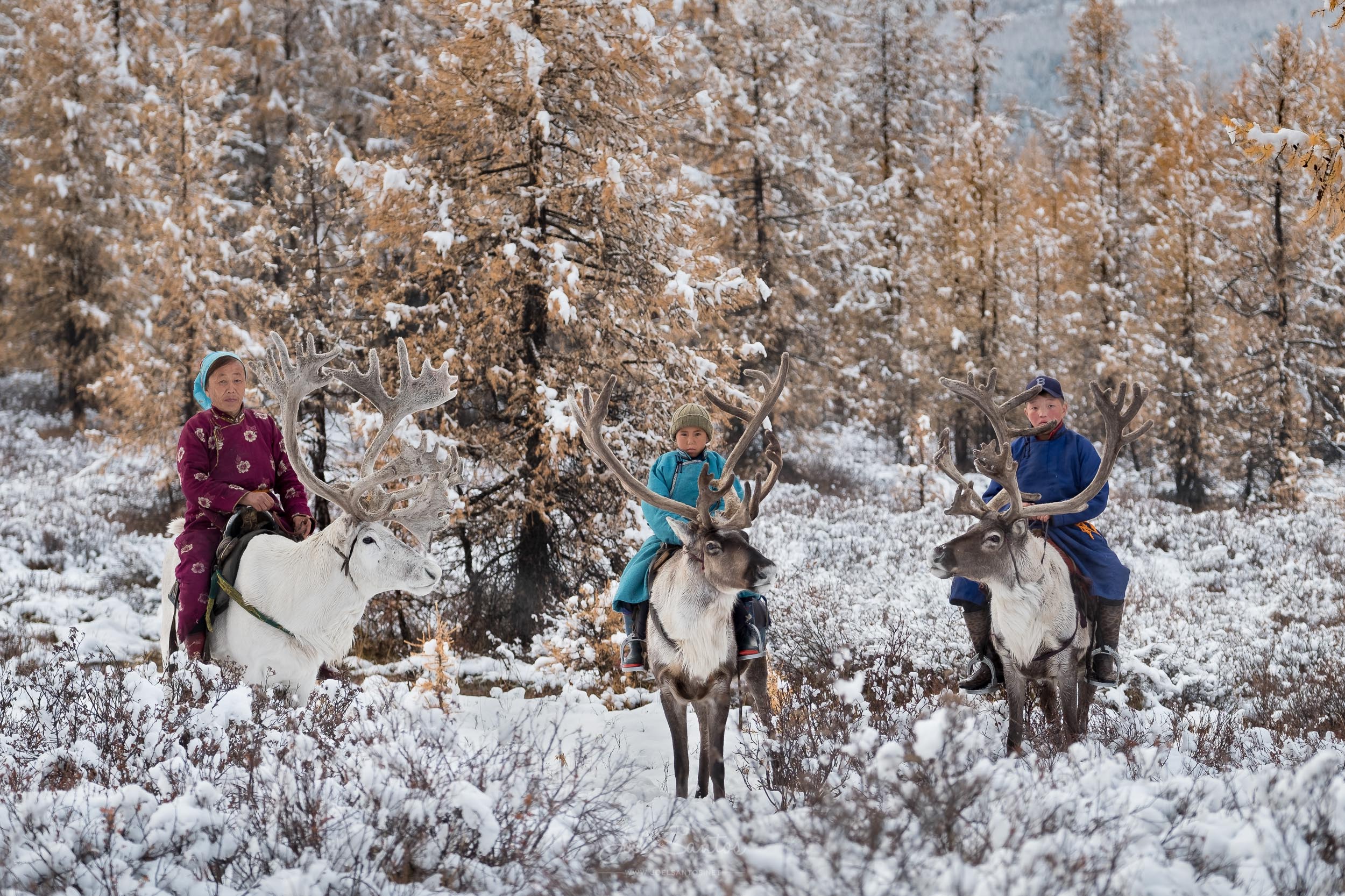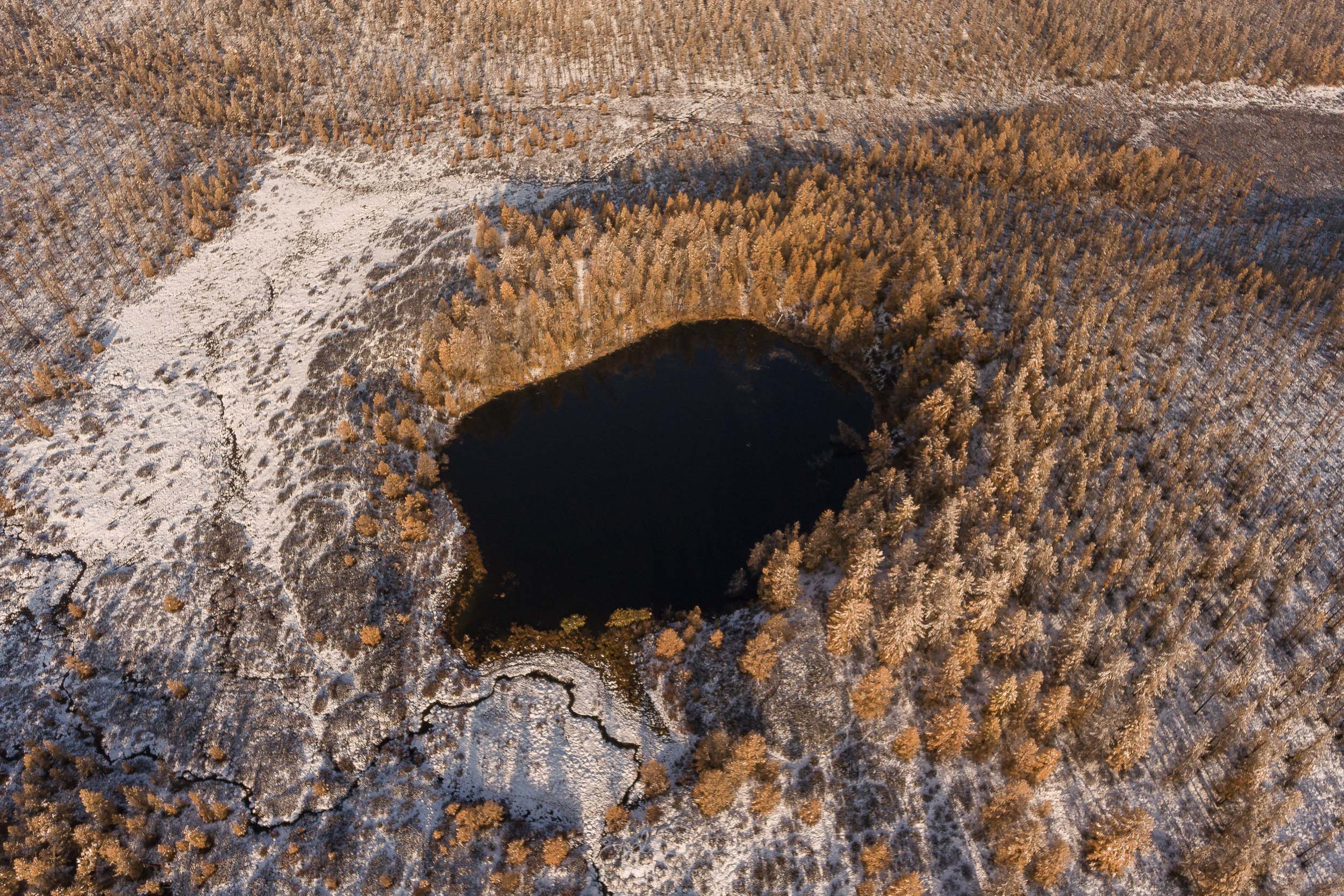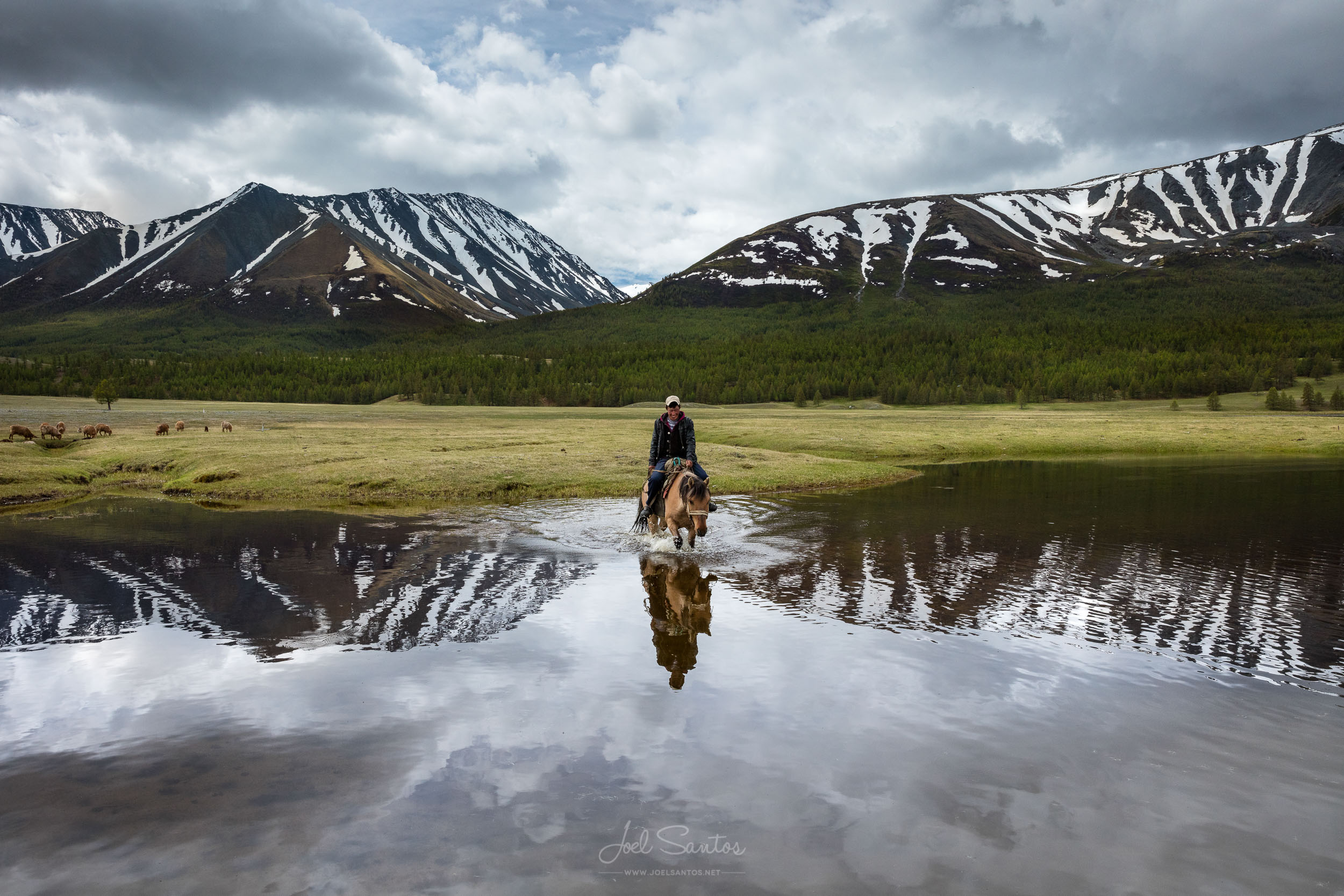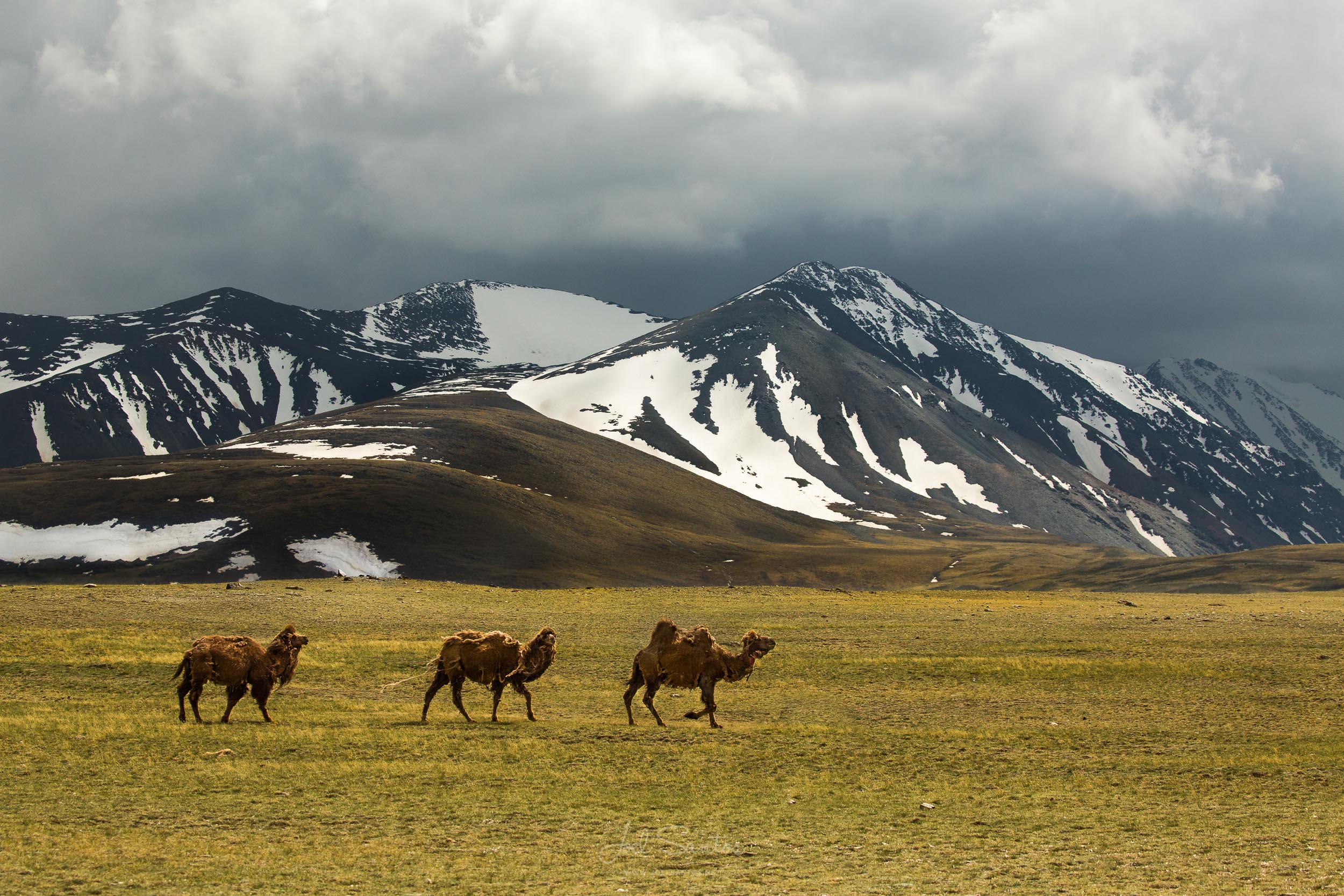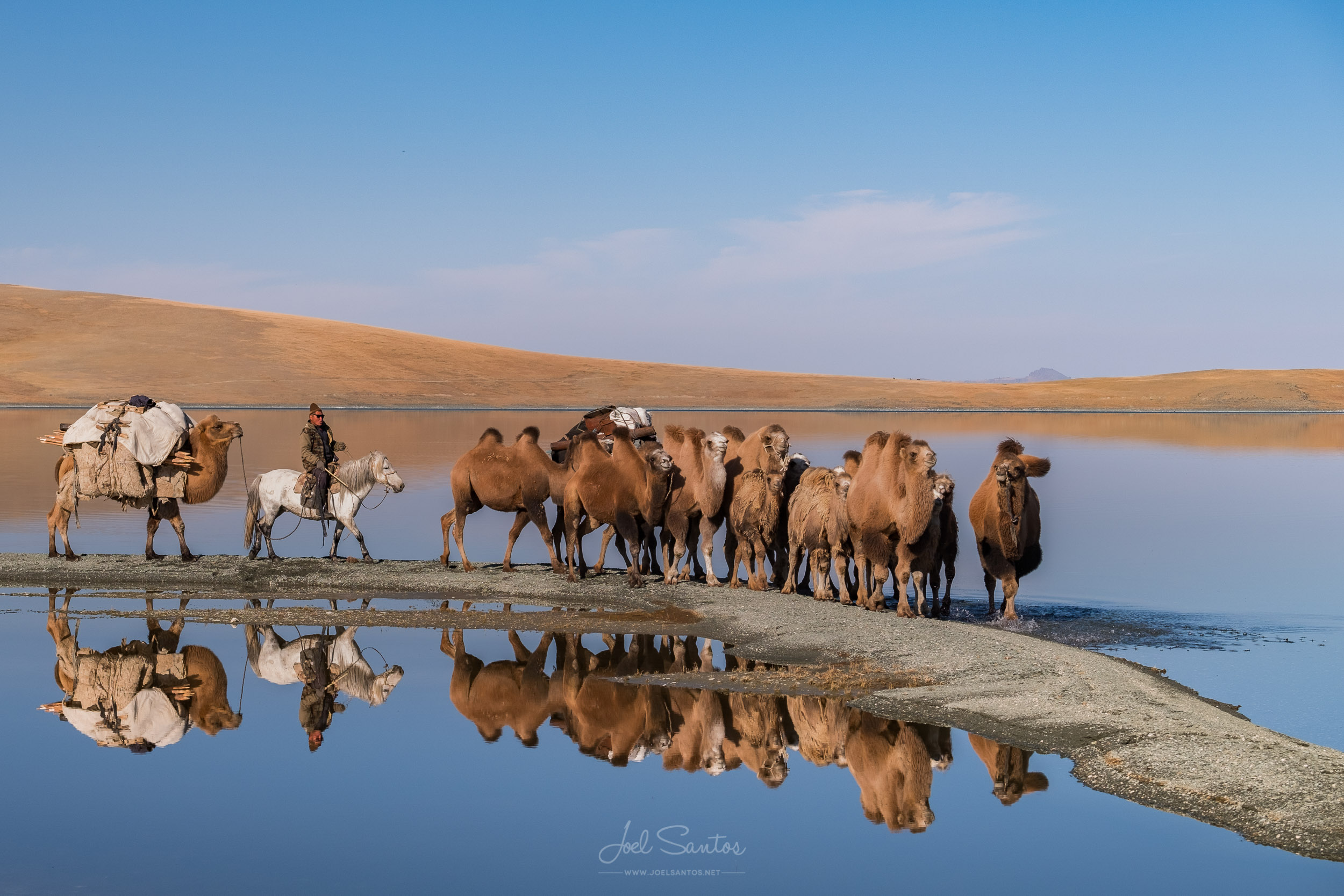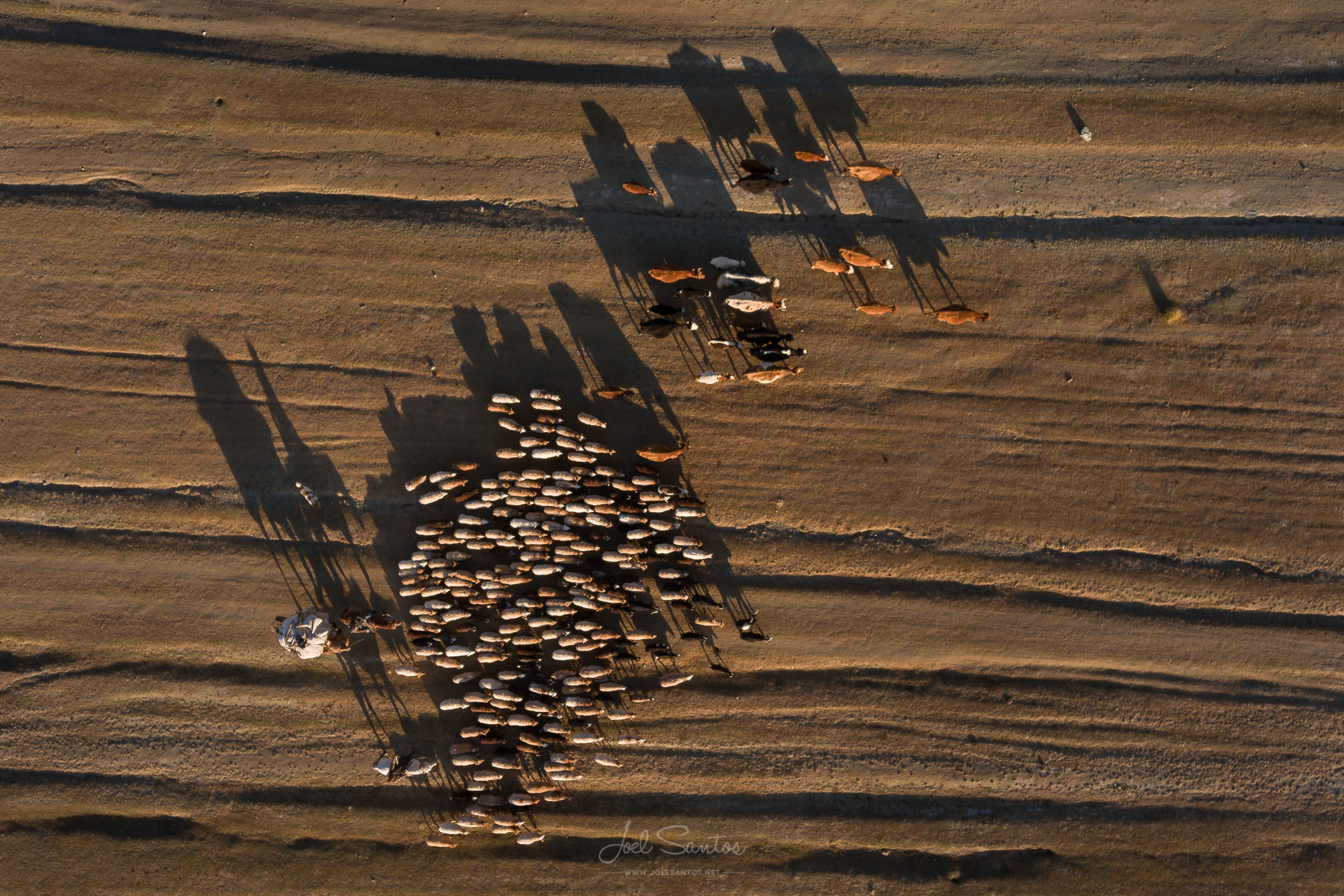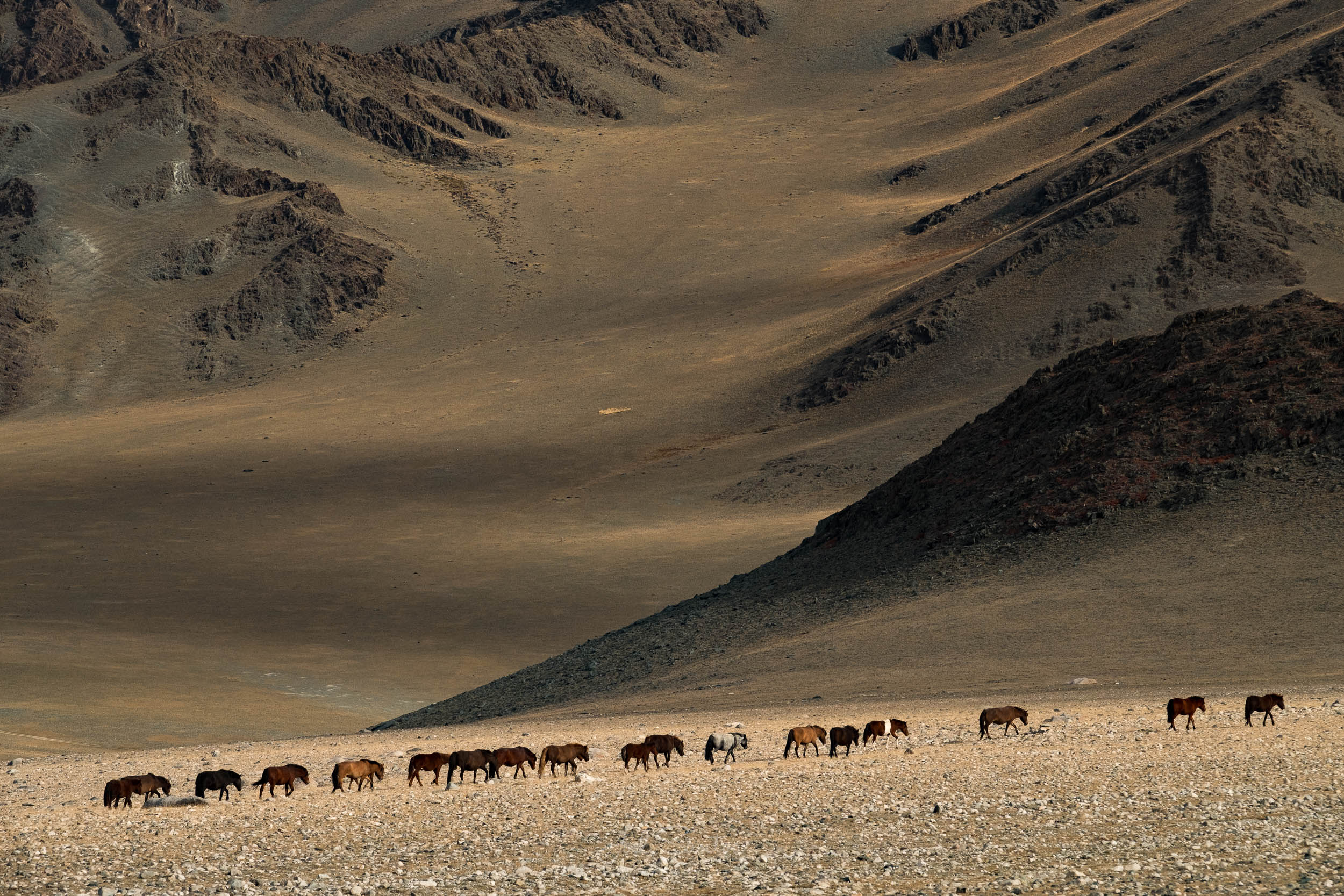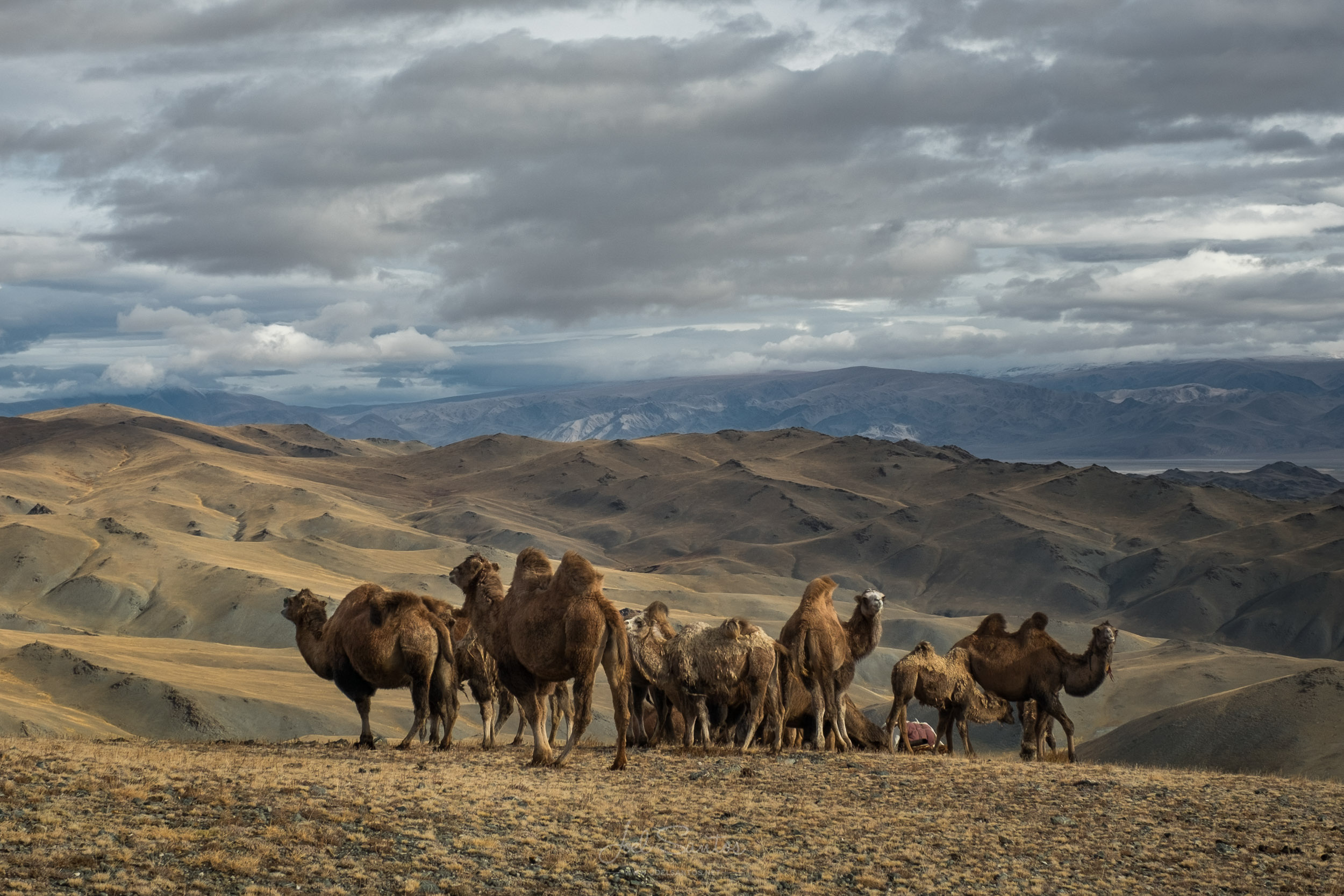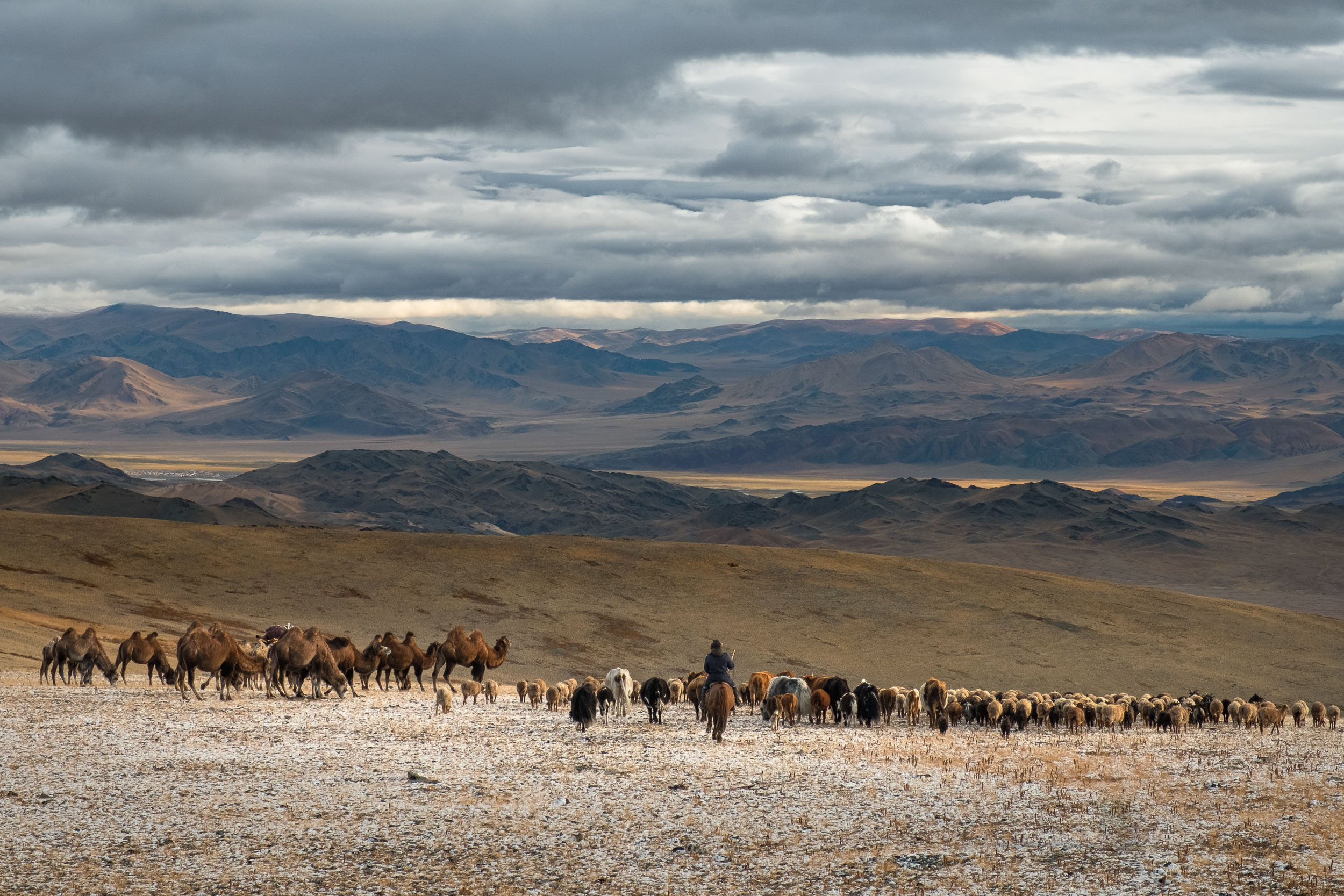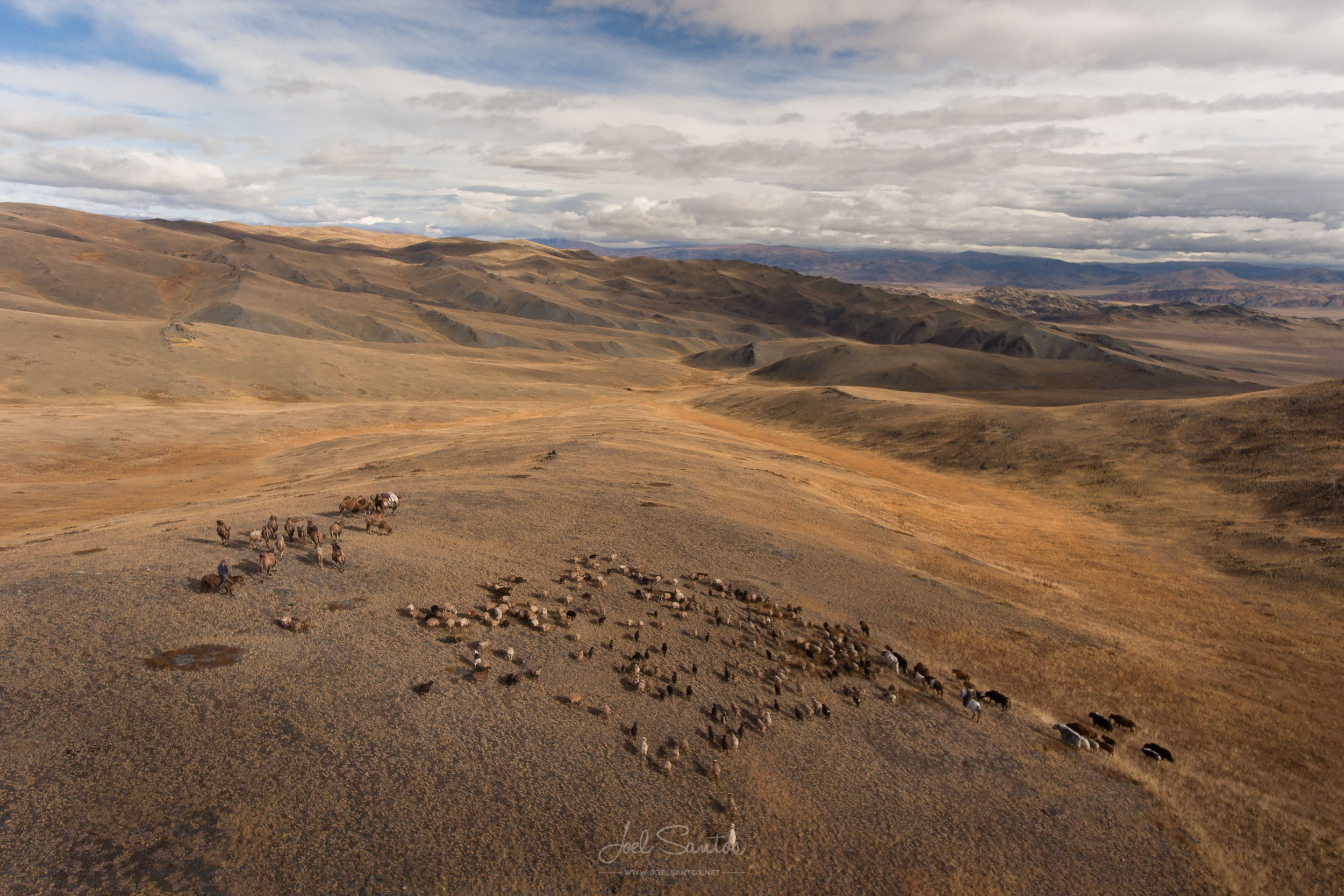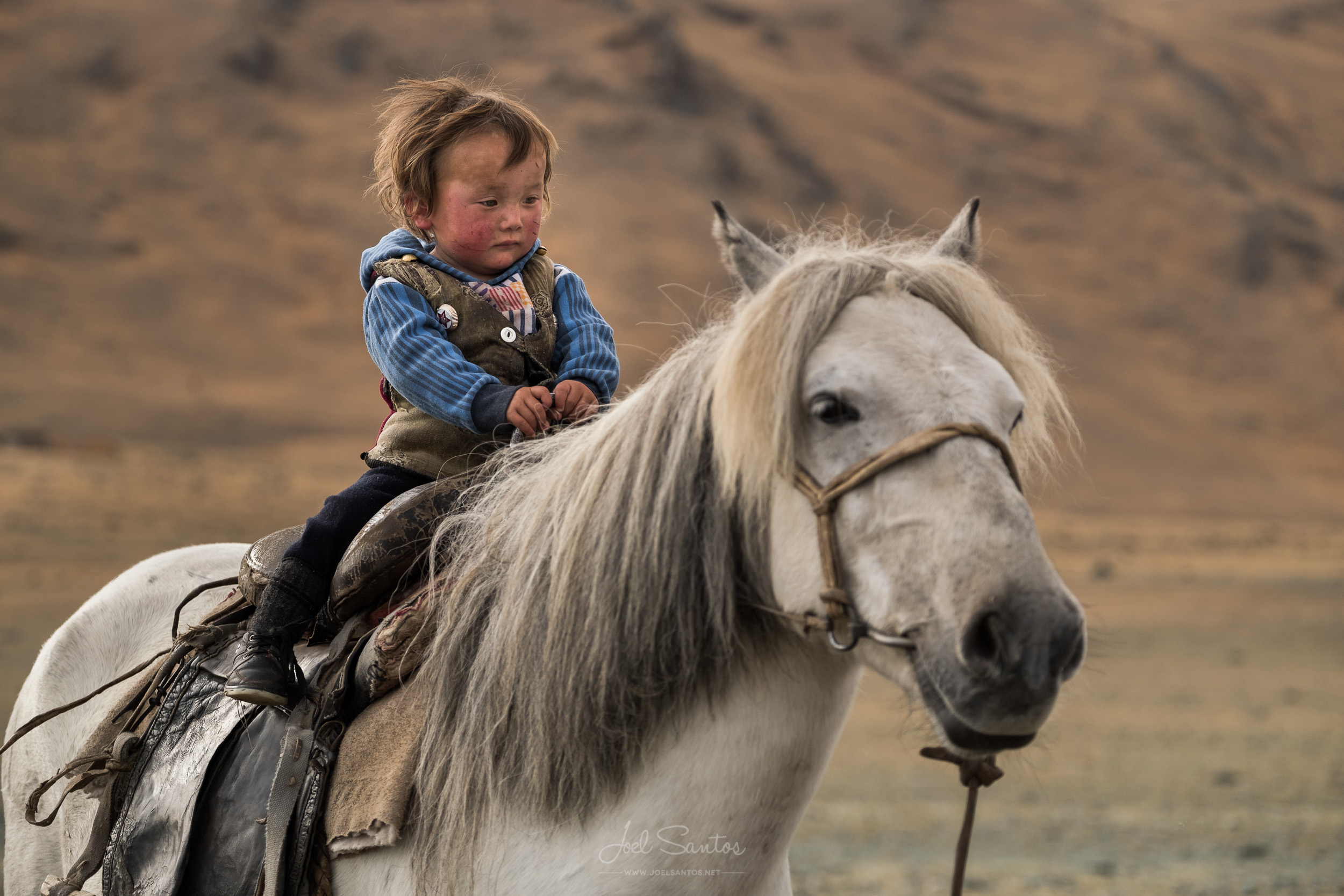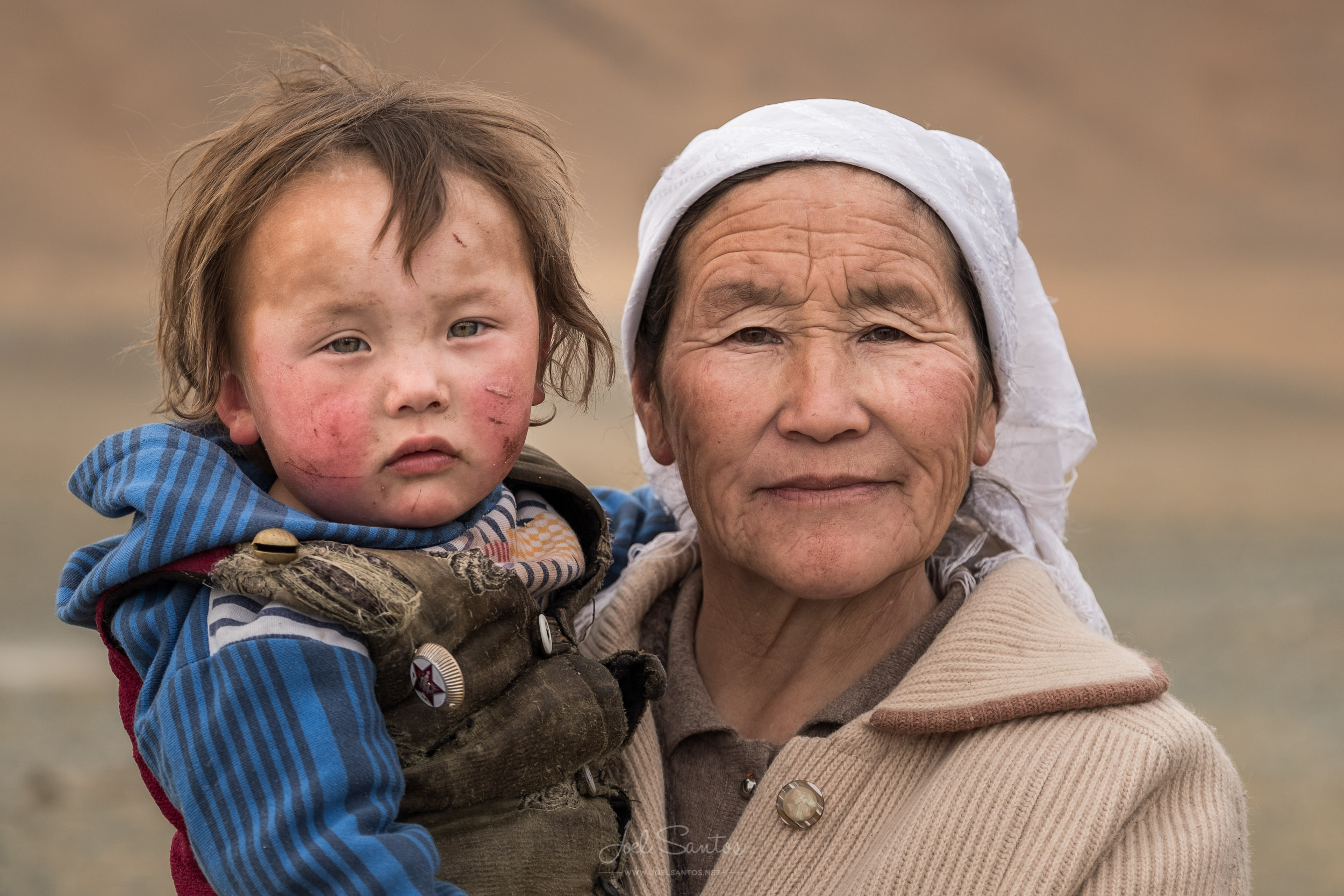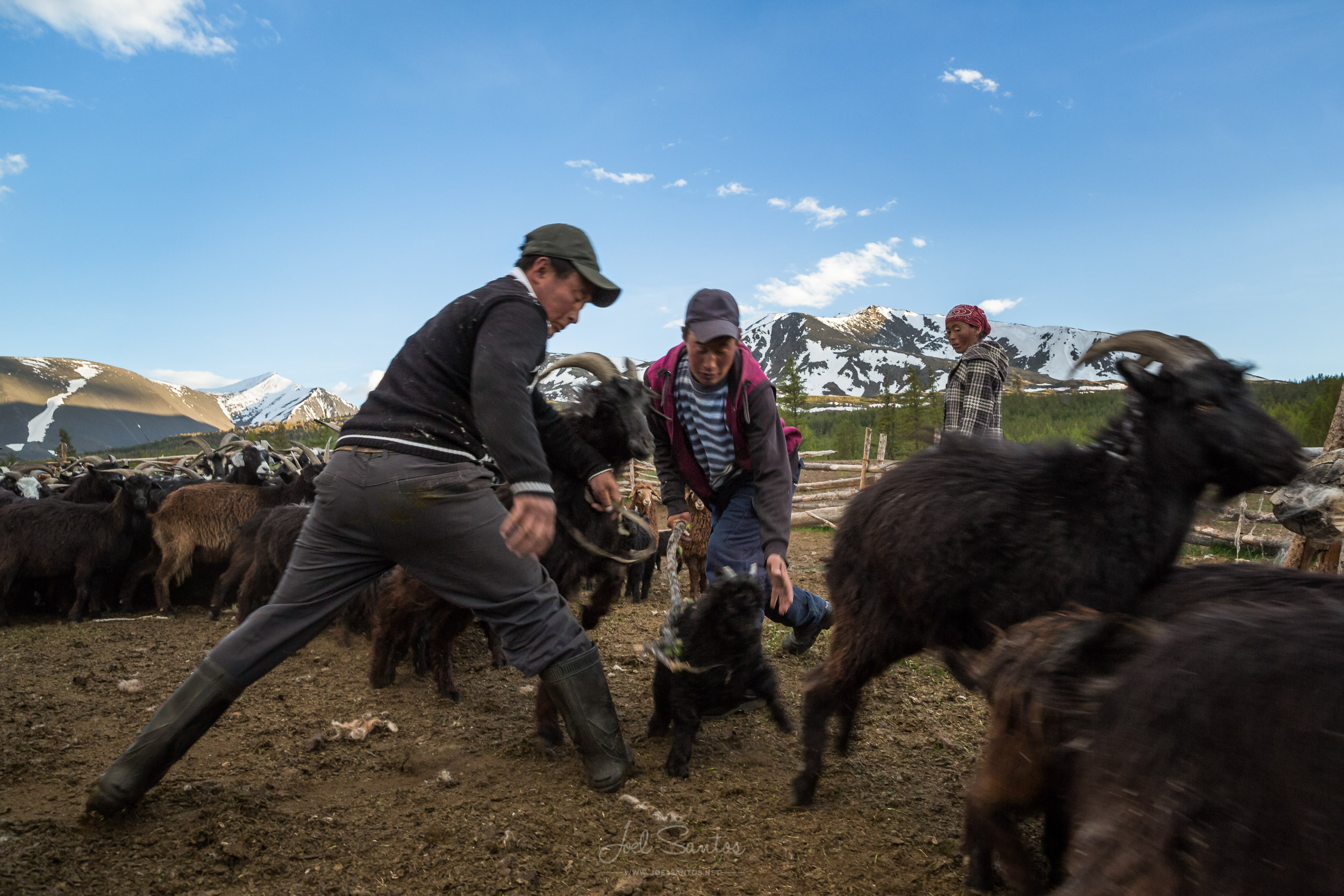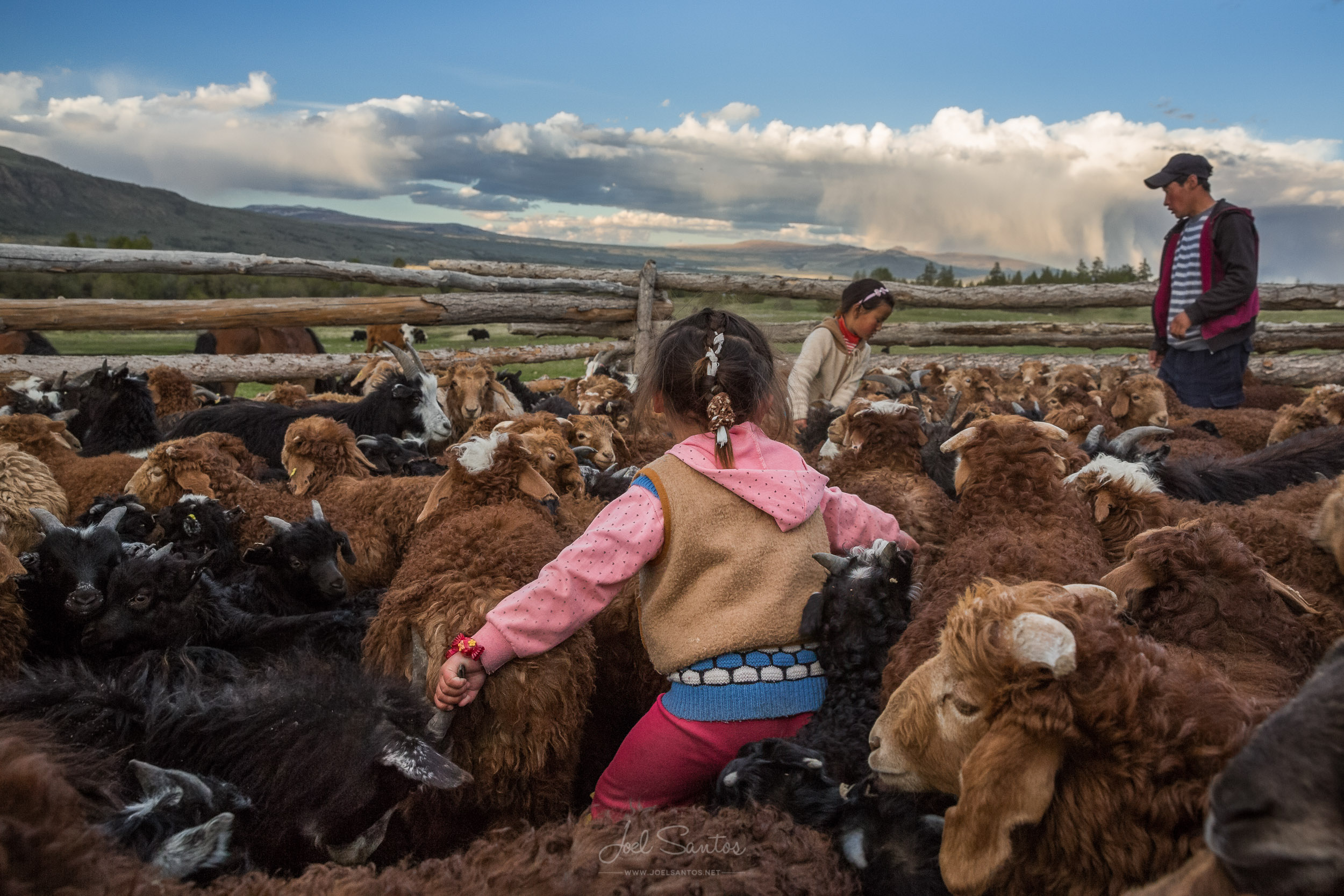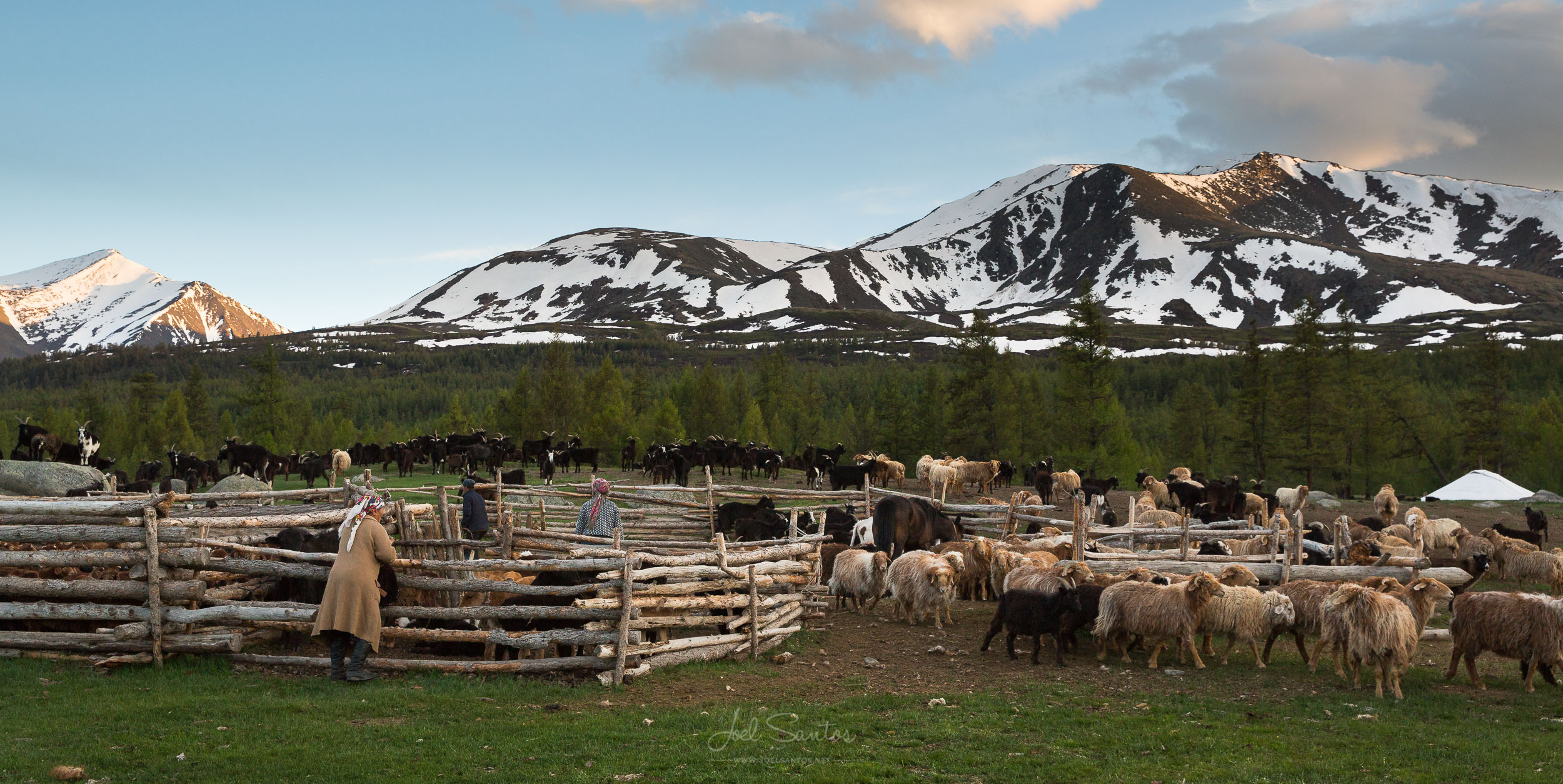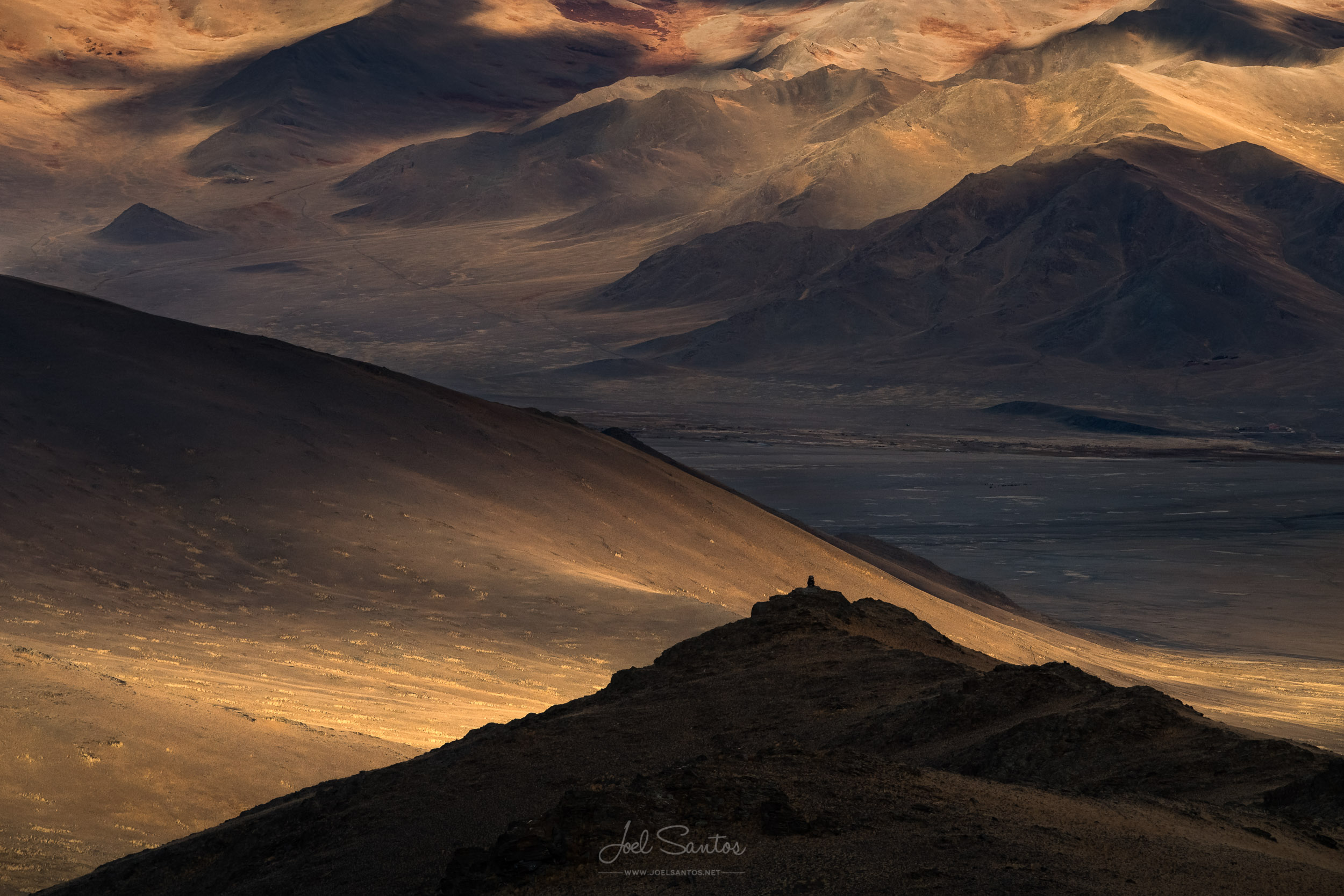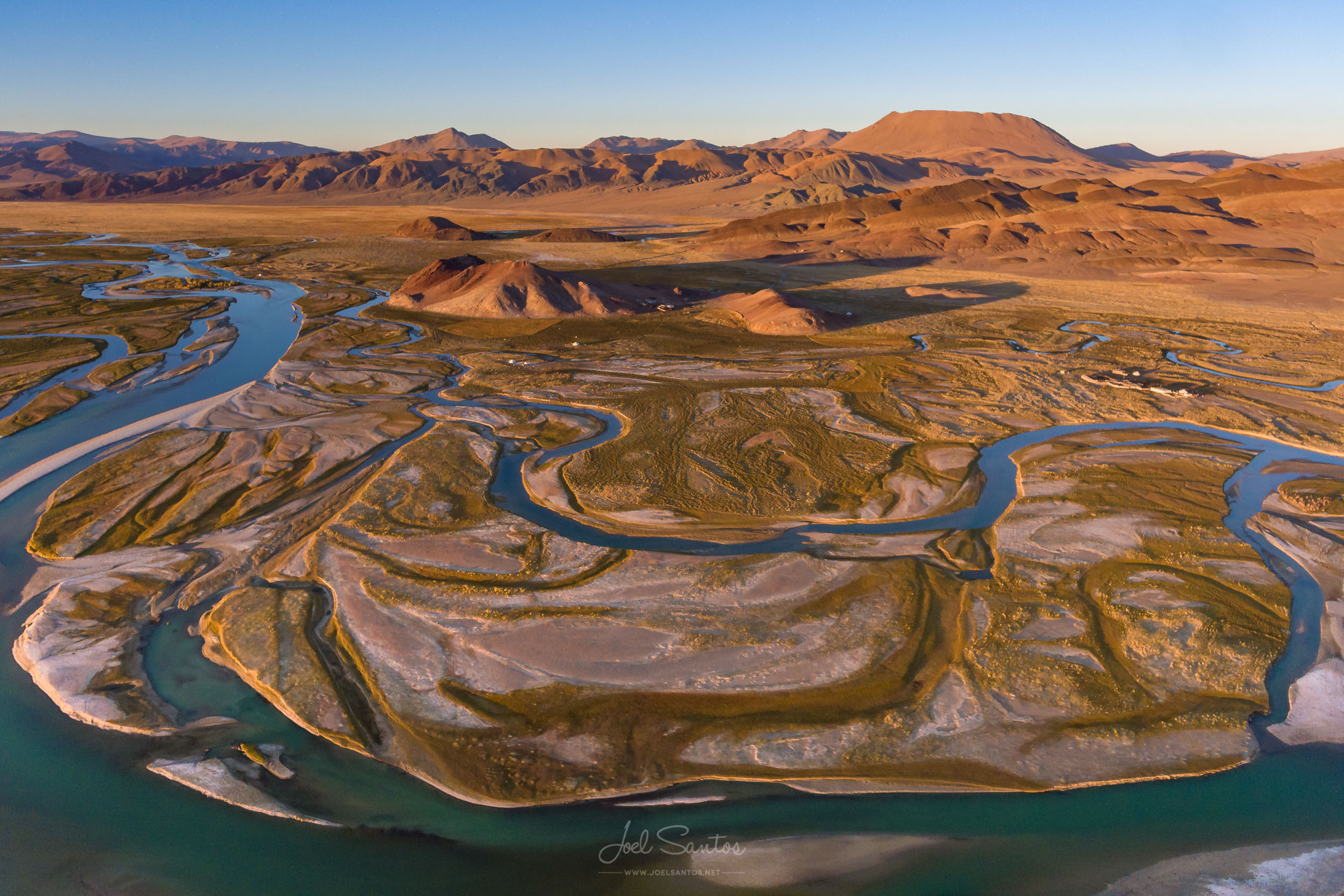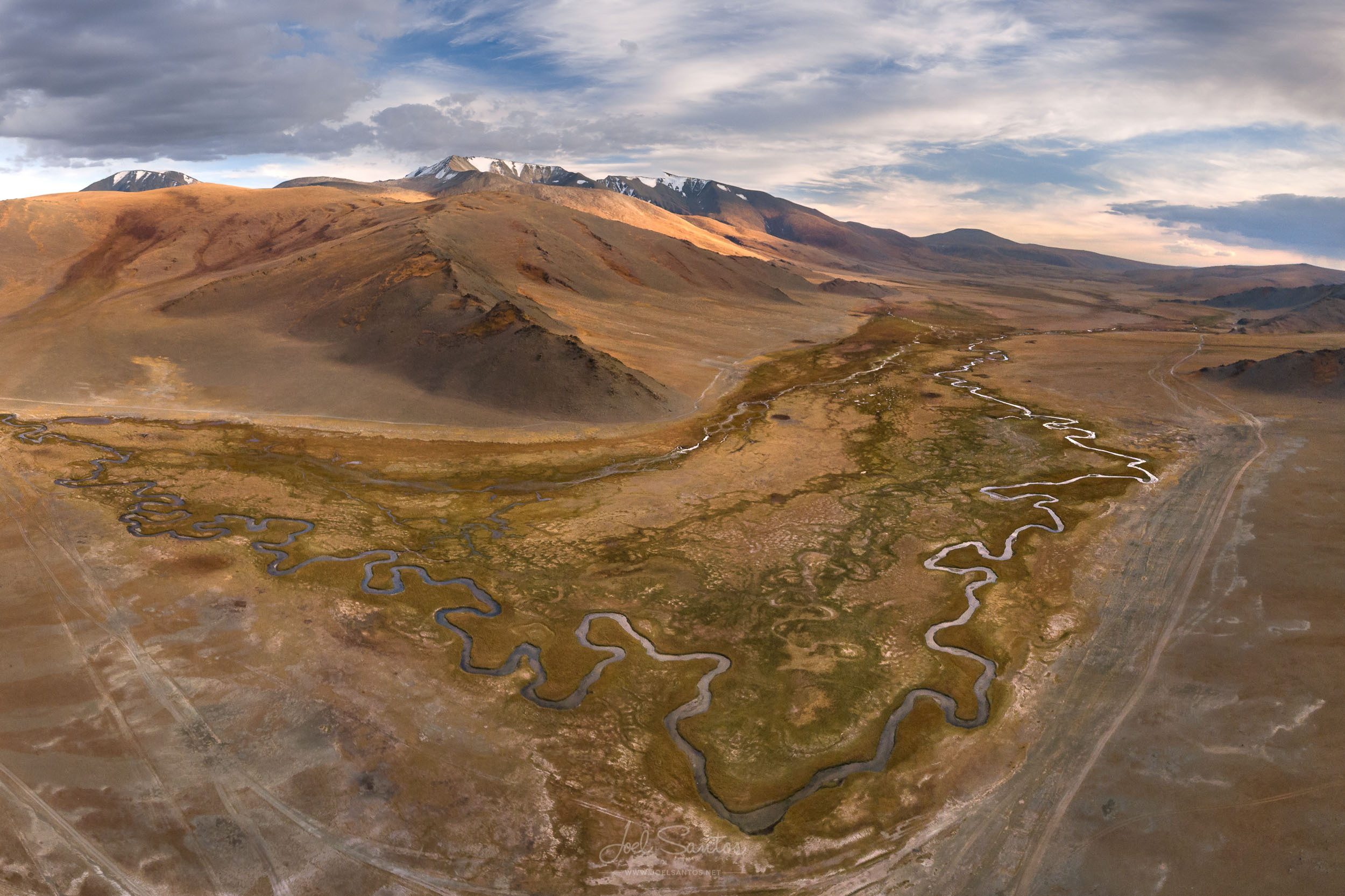Eagle Hunters & Reindeer Herders
Across blizzards and time, the enduring journey of Mongolia’s Kazakh and Tsaatan nomads
Full story after the images
Eagle Hunters — A Legacy Carried on the Wing
High in the Altai Mountains of Western Mongolia, a rare and ancient tradition persists: the art of hunting with golden eagles. Practiced by ethnic Kazakhs for centuries, this form of falconry is not a skill one simply learns — it is inherited. Only those whose fathers were eagle hunters are permitted to continue the lineage, making it one of the most exclusive and endangered cultural practices in the world. Today, fewer than 400 traditional eagle hunters remain, each one a guardian of a bond between human and raptor that defies time.
The hunters, known as berkutchi, raise and train golden eagles to hunt foxes and hares in the brutal winter landscape. The relationship is built on trust, instinct, and reverence. It is not merely a method of survival, but a ritual of identity — a way of life etched into the mountains and passed from generation to generation.
Among the stories that have emerged from this world is that of Aishol Pan, a young girl who challenged centuries of male-only tradition to become the first internationally recognized female eagle huntress. Her journey, marked by courage and quiet defiance, has become a symbol of cultural evolution within a deeply patriarchal system.
Since 2015, Joel Santos has been documenting the eagle hunters with care and continuity, often returning to the same families and regions to witness the changing seasons and shifting dynamics. His work has helped preserve not only the visual beauty of the practice but also the voices of those who live it — from seasoned hunters to the trailblazing Aishol Pan.
Tsaatan — The Reindeer People of the Taiga
Far north, deep in the boreal forests away from the Khovsgol Lake, the Tsaatan people live in harmony with their reindeer — animals that are not merely livestock, but lifelines. The Tsaatan rely on their herds for transport, milk, and spiritual connection, moving through the taiga in search of grazing grounds. Their lifestyle is nomadic, elemental, and increasingly endangered by climate change, disease, and the pressures of modernity.
Life in the taiga is elemental. Families reside in canvas ortz tents, surrounded by snow-draped larch trees and the soft clatter of antlers. The reindeer are not domesticated in the conventional sense; they are companions, woven into every aspect of daily life. The Tsaatan’s knowledge of the land is intimate and ancestral, passed down through generations who have survived in one of the planet’s most isolated and fragile ecosystems.
Joel Santos first journeyed to the Tsaatan in 2016, traveling into the depths of northern Mongolia to reach the Ganbaa family. There, he met Purev — a widowed matriarch and seasoned herder whose quiet strength anchors her family’s survival. Joel’s documentation has captured not just the visual poetry of their environment, but the emotional texture of their lives: the resilience, the rituals, and the quiet dignity of a people living in harmony with nature.
Kazakh Nomad Migration — The Rhythm of the Seasons
In the vast and unforgiving landscapes of Western Mongolia, the Kazakh nomads continue a rhythm of life shaped by the seasons and the terrain. Several times a year, entire families pack their homes, load their animals, and set off across mountains, valleys, and open steppe. These migrations are not symbolic gestures — they are essential acts of survival, dictated by weather, pasture, and ancestral knowledge.
The journey is arduous. Blizzards sweep across the highlands in winter, while summer brings scorching heat and rocky paths that test both endurance and resolve. Yet through it all, the Kazakhs move with grace and determination, guided by a deep connection to the land and to each other. Their caravans, often led by horseback and accompanied by flocks, are living threads in a cultural tapestry that has endured for centuries.
As modernization and climate change reshape Mongolia’s rural landscape, the Kazakh nomads face increasing challenges. Roads, cities, and shifting weather patterns threaten the continuity of their way of life. Yet their migrations persist, echoing the pulse of the land itself — a testament to human adaptability and the enduring power of tradition.
Since 2015, Joel Santos has followed these migrations, documenting the intimate moments that define nomadic life, a window into a world where movement is meaning — where every step is a reaffirmation of identity, tradition, and belonging.
Photos can be purchased for printing and/or licensing. Please contact for inquires. Check Terms and Conditions. All images © Joel Santos
why not take a look at these videos?
Follow these nomadic families across the brutal landscape of Mongolia as they move their entire lives 150km through the mountains.

